On the evening of Tuesday November 21st an exclusive gathering of business leaders came together in the elegant surroundings of 25 Fitzwilliam Place for a Leadership Masterclass with Steering Point Leadership and Talent Development Director, Jonny Cooper and Minister Paschal Donohue.
Steering Point Founder and Partner Shay Dalton opened the evening welcoming the Minister and thanking sponsors, TowerView for supporting the event.
During the conversation Minister Donohue related to Jonny Cooper how he manages the responsibilities associated with being Minister for Public Expenditure and Reform in Ireland, President of the Eurogroup and representative for Dublin Central constituency. A consistent presence of mind, clarity of thought and an ability to navigate complexity with his team all play crucial parts in the balancing of his demanding daily routine.
Minister Donohue emphasised the importance of staying laser-focused on the task at hand, even when attention is diverted. He also shared his approach to balancing home life with political responsibilities and the value of maintaining interests outside of work.
Finally, the Minister stressed the significance of having a mentor or trusted advisor, someone to consult with when making big decisions or identifying potential blind spots in a constantly evolving world.
“A memorable and interactive night in the company of distinguished and successful leaders at our Steering Point Leadership Dinner series.” said Cooper “During his masterclass Minister Paschal Donohue was able to impart his depth of knowledge and experience in an intimate manner. From the positive feedback received so far it is evident that our clients and friends walked away with something very special.”
Attendees spoke highly of the evening with one guest, Colm Woods MD of CW8 Communications commenting “Even with the terrific room full of business leaders, the standout for everyone was undoubtedly the candid and wide-ranging conversation between Jonny and Minister Donohoe. Humility, affability, integrity, honesty, dedication – all the qualities that one should aspire to in leadership, evident for all to see on both sides of the chat. A conversation that will stay with me for some time.”
Gallery

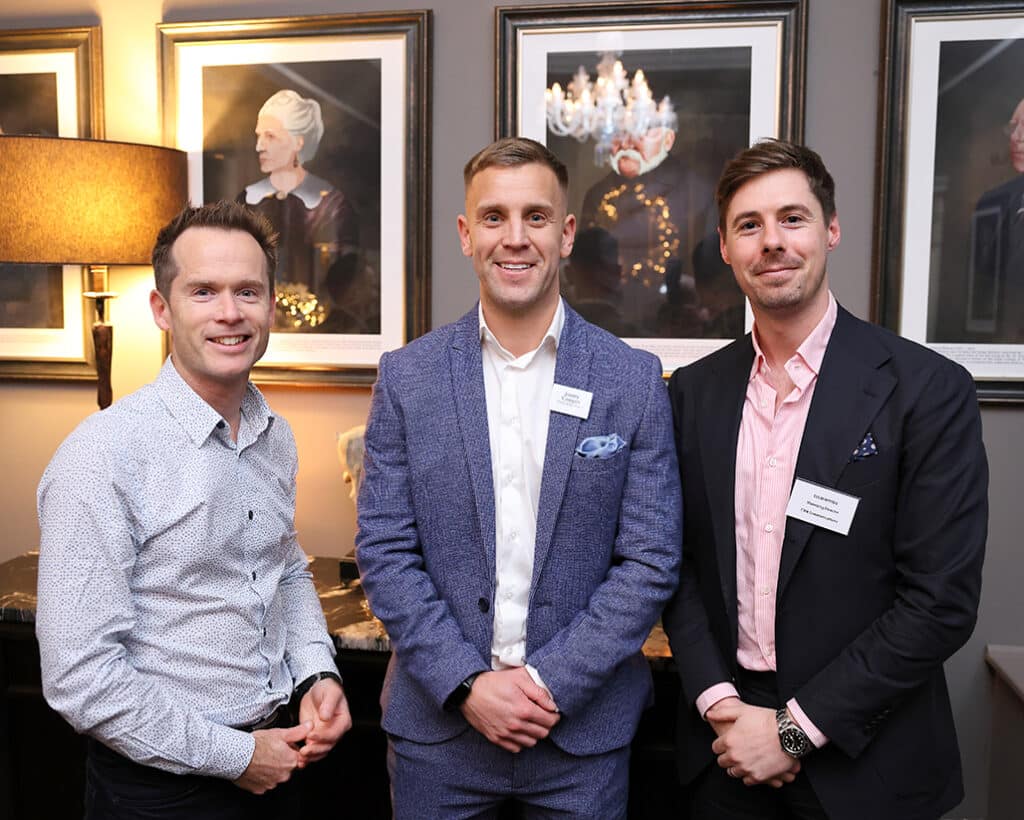
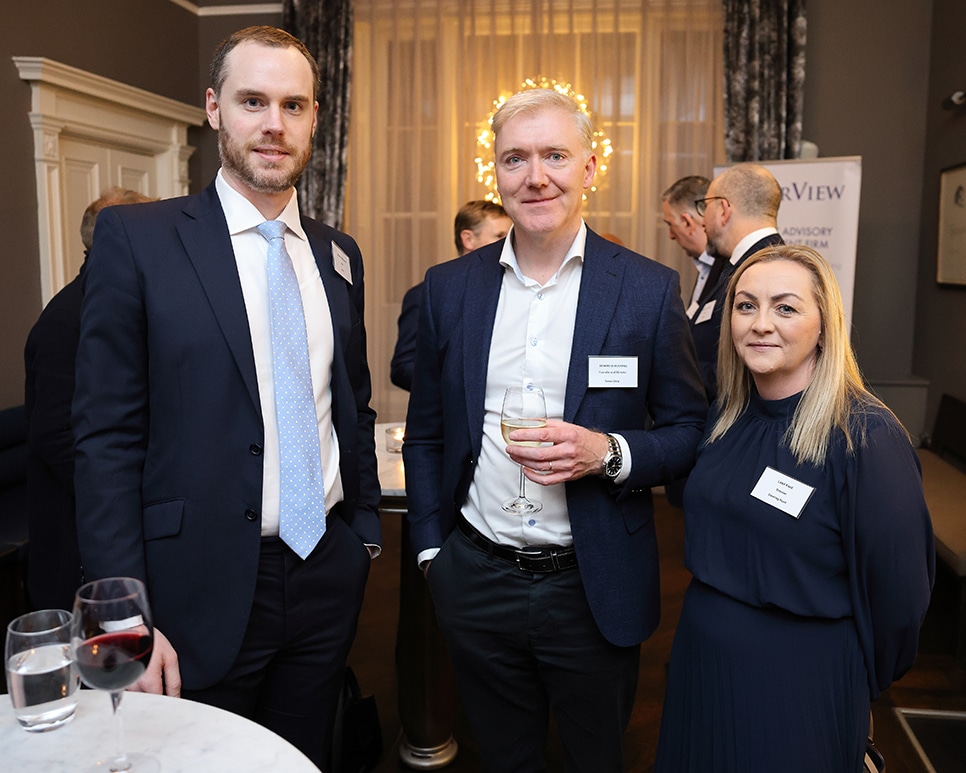
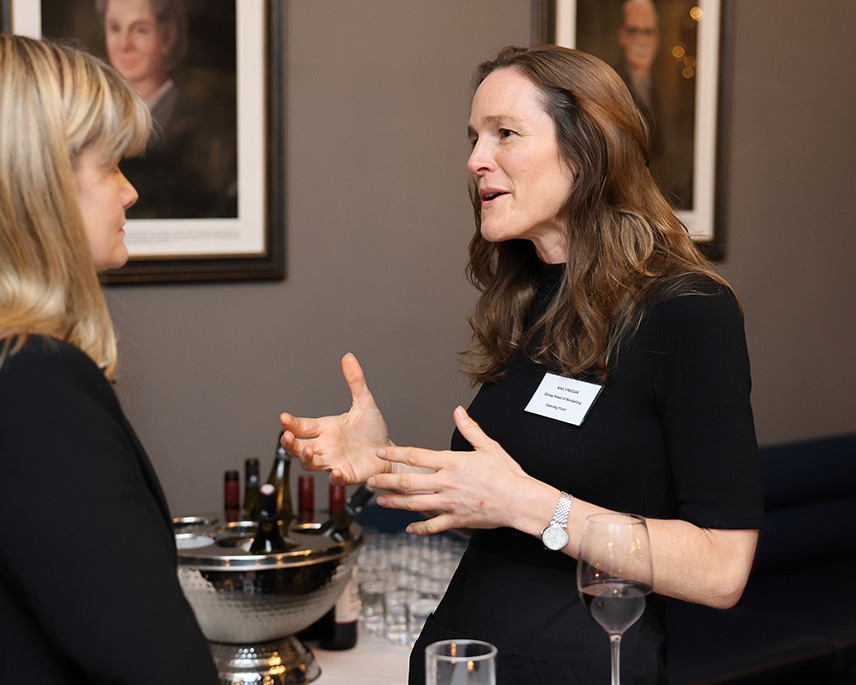
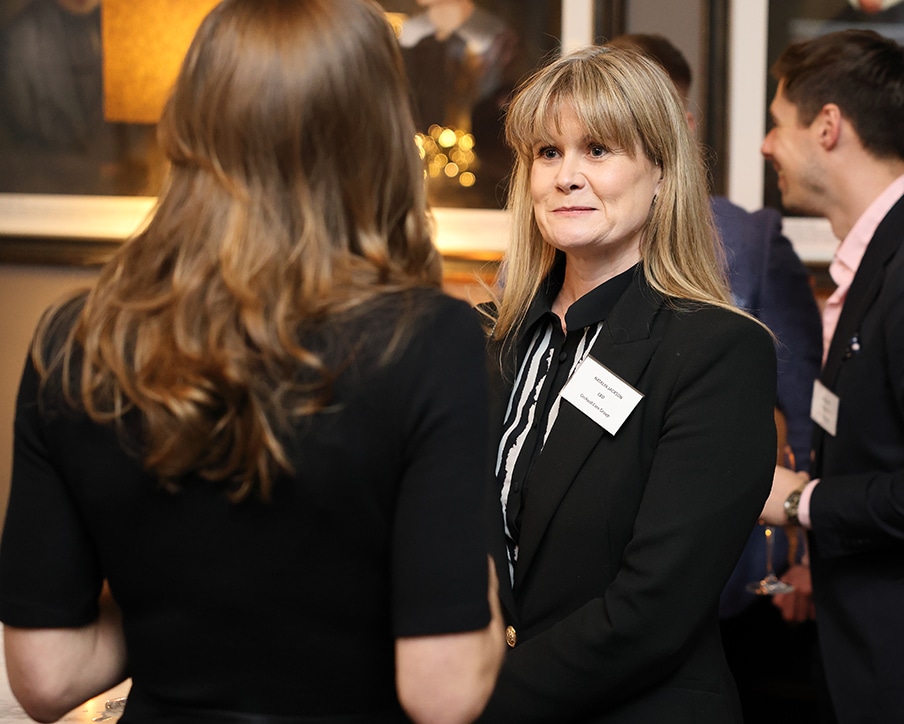


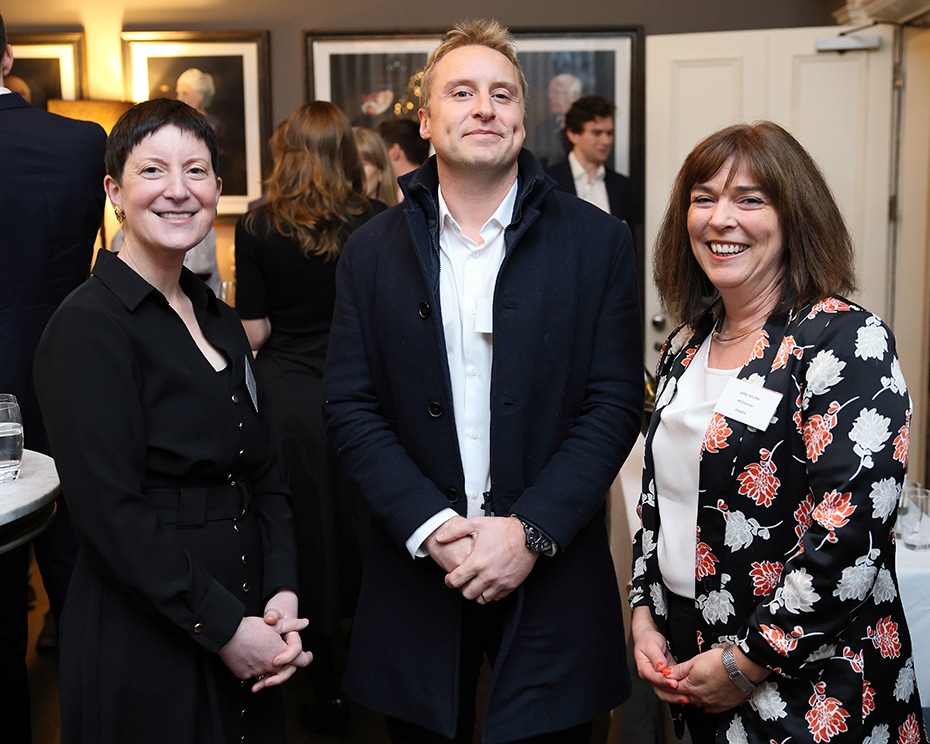
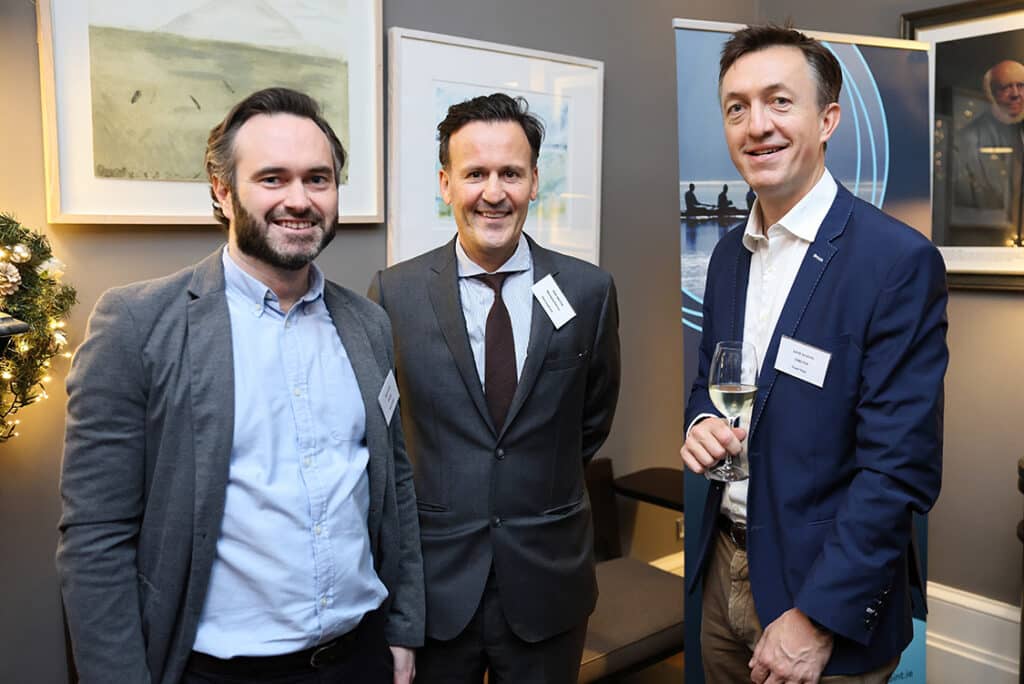
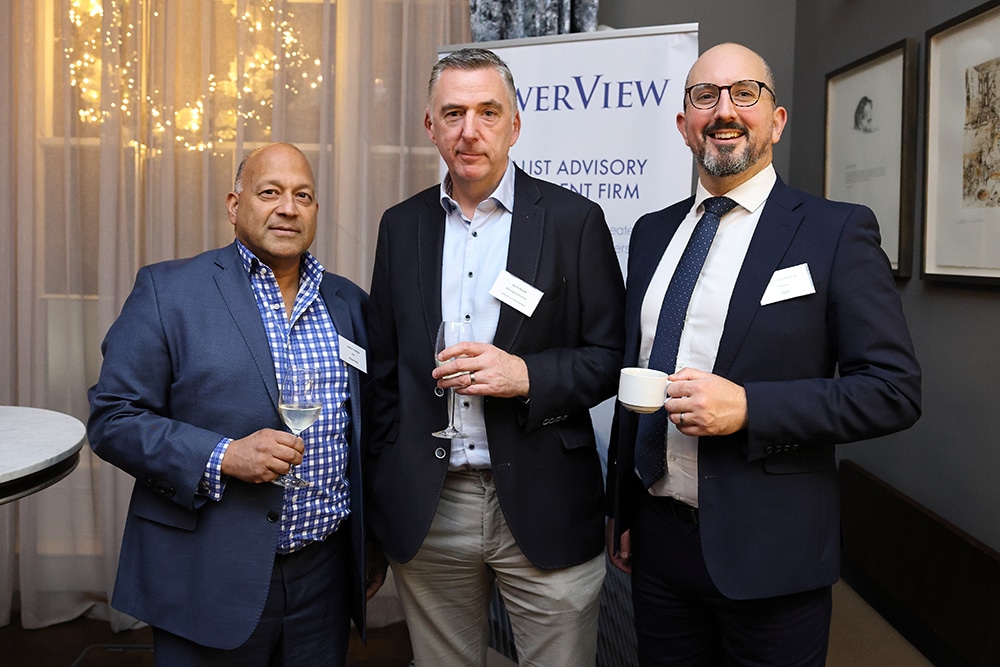
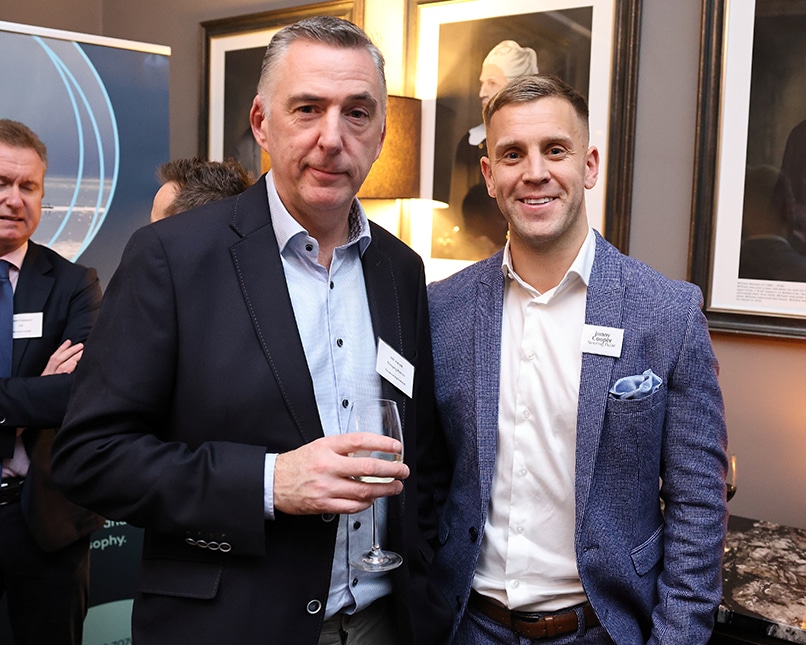
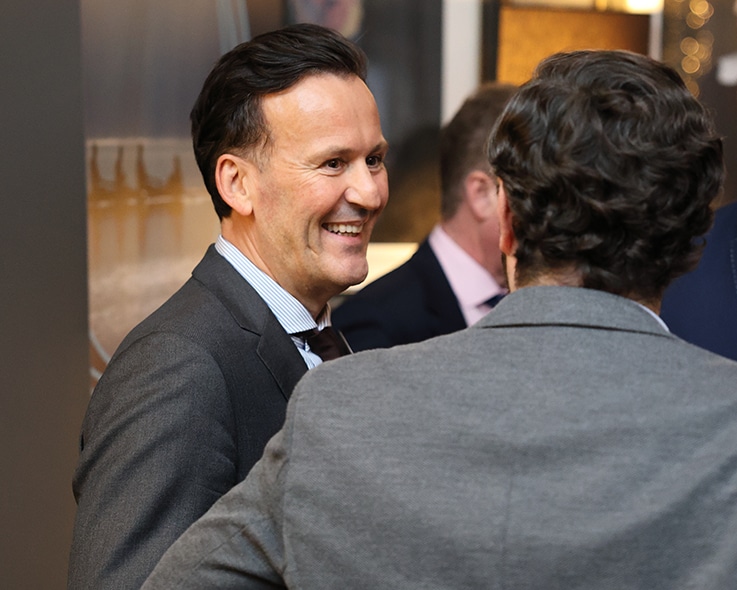
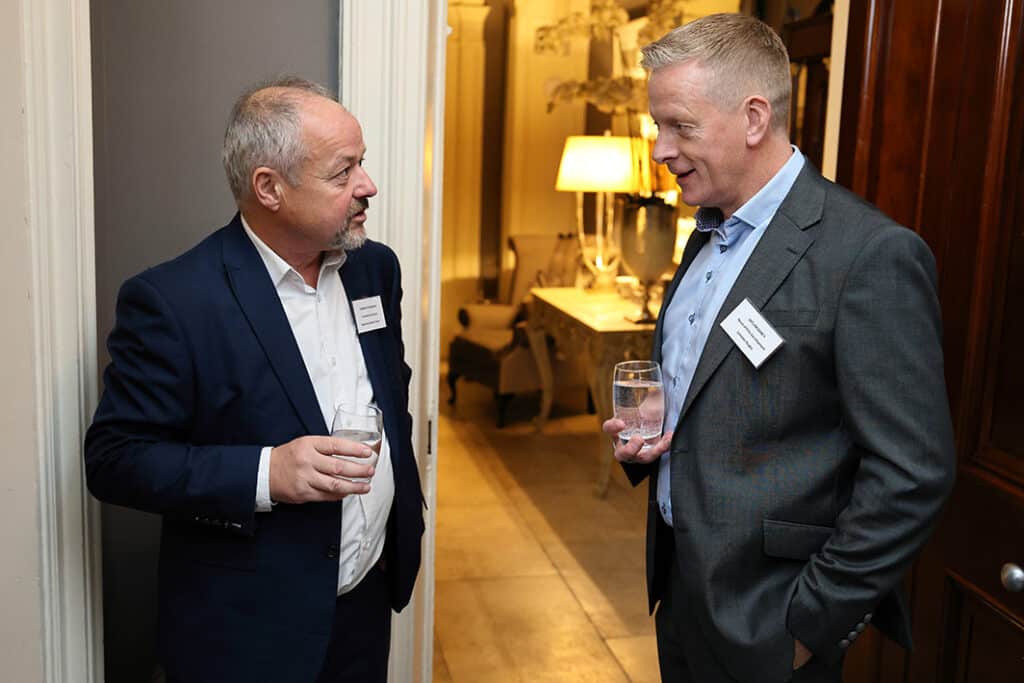

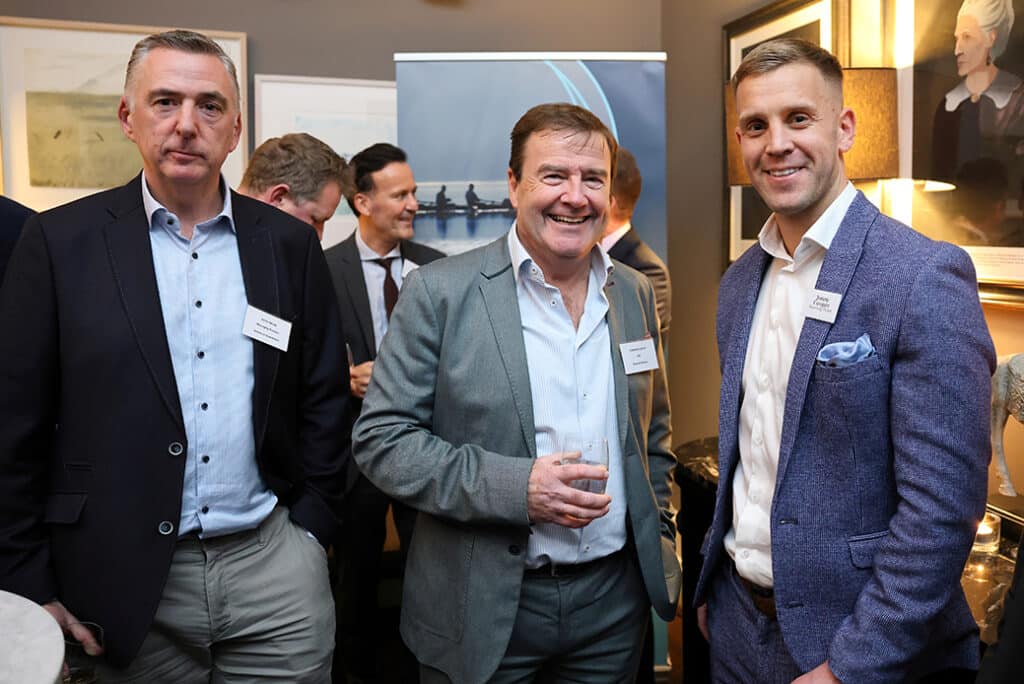
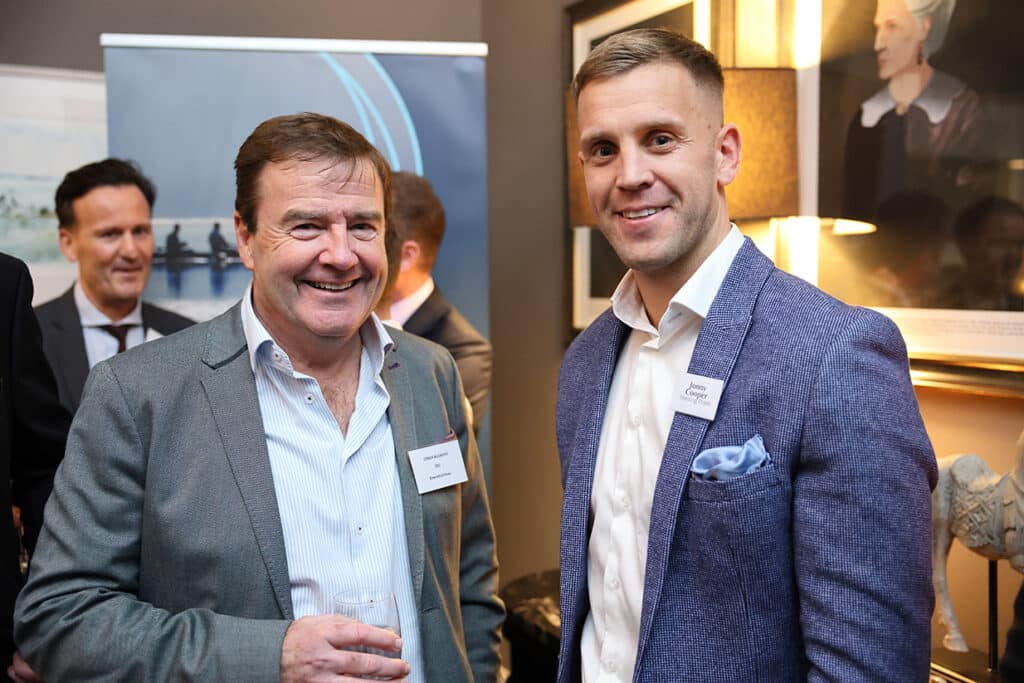
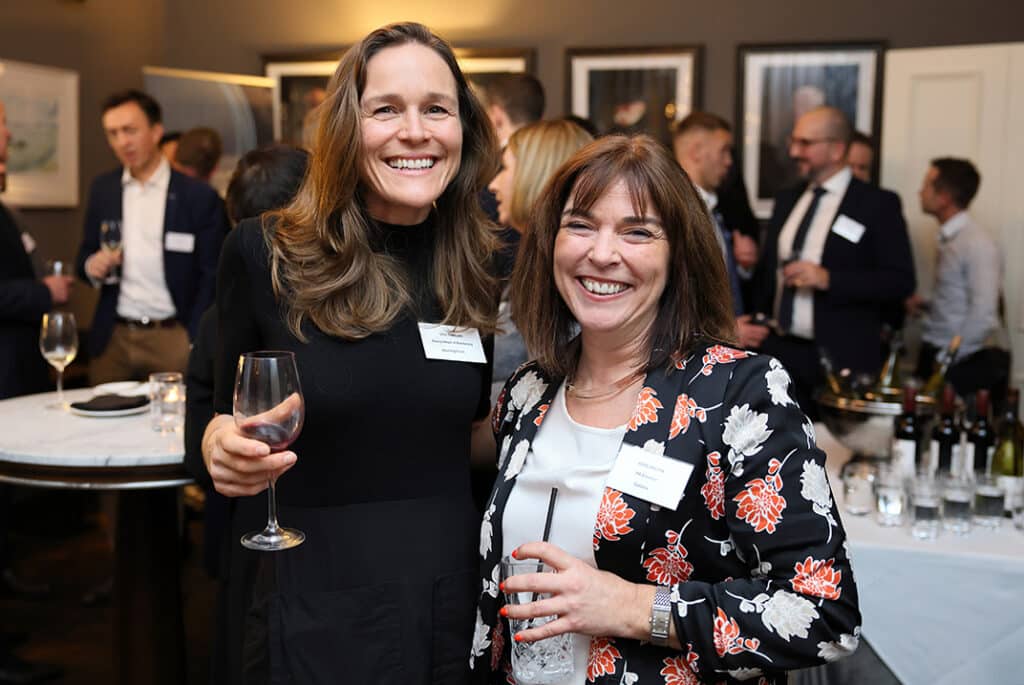

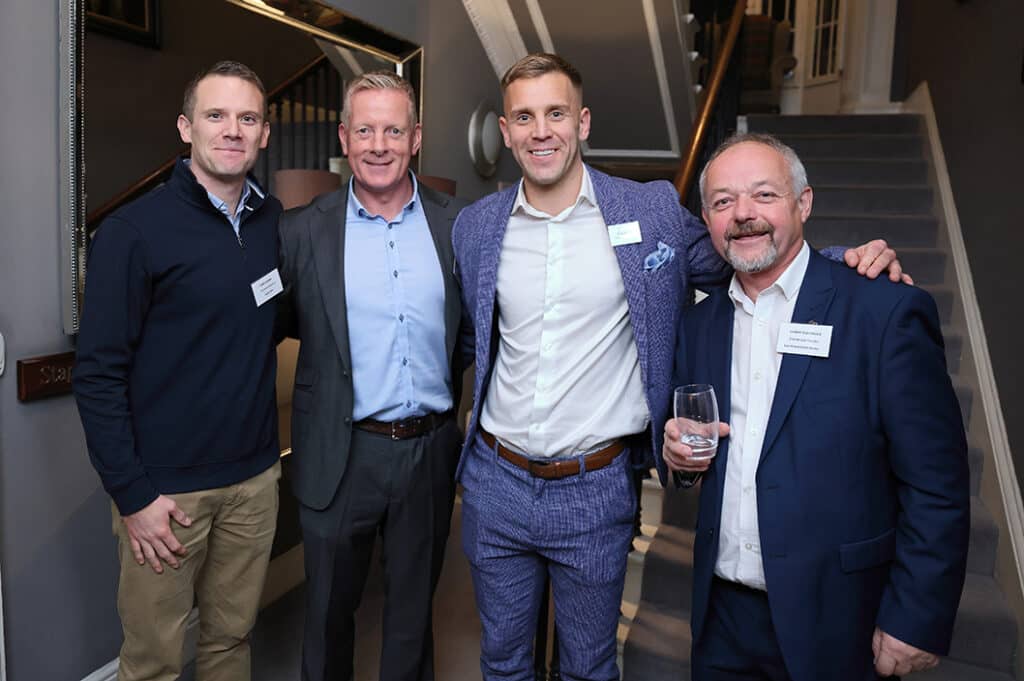
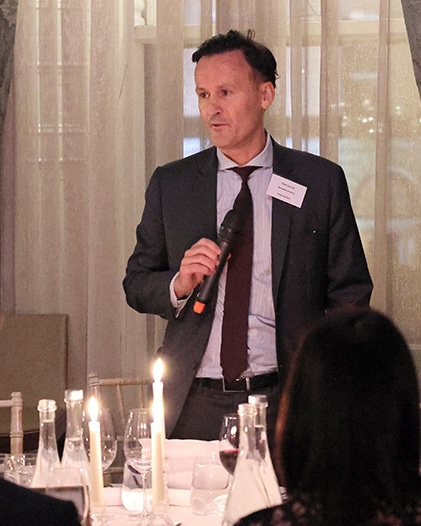
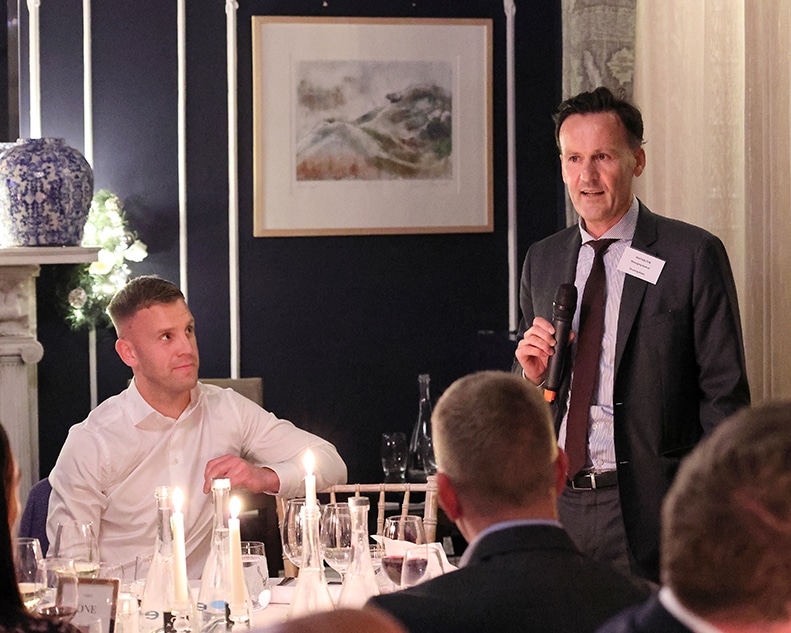

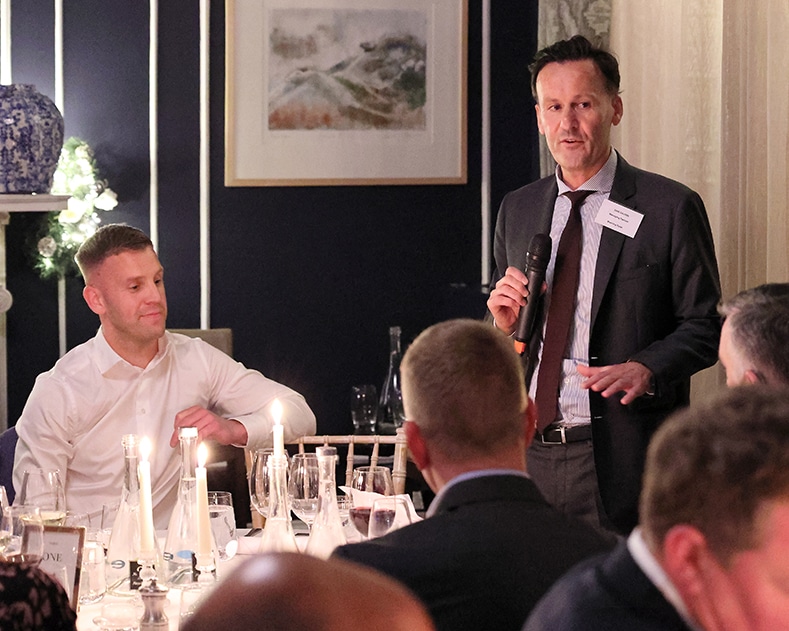
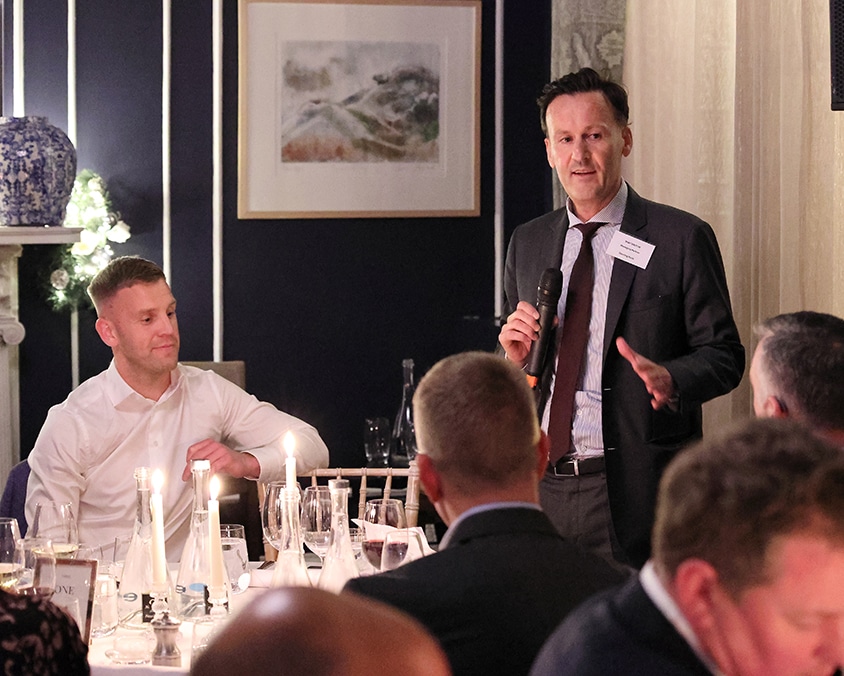
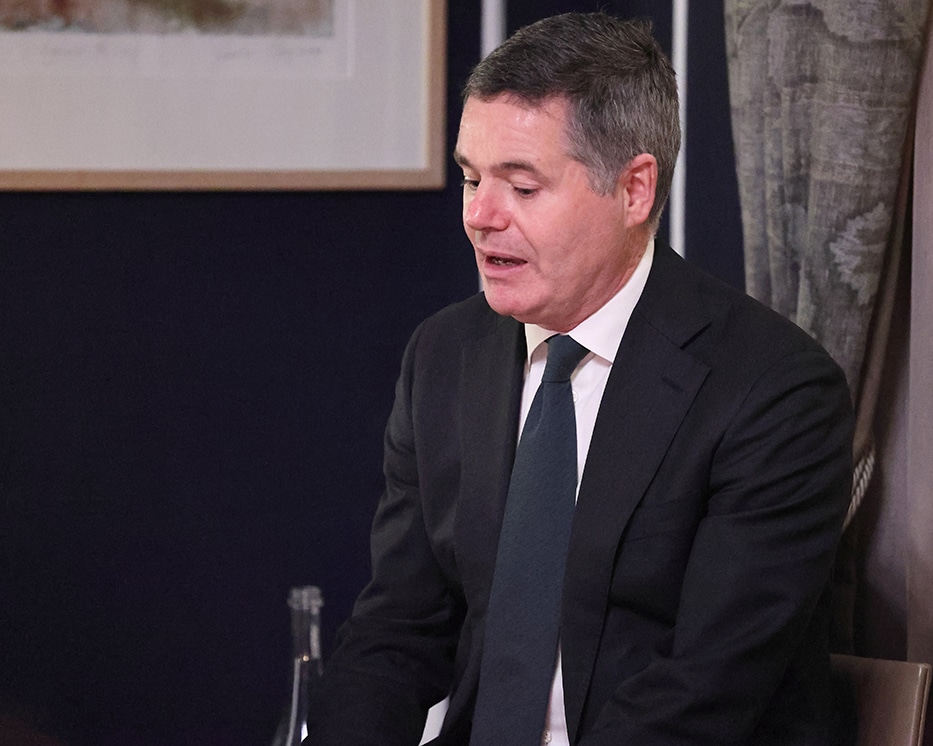
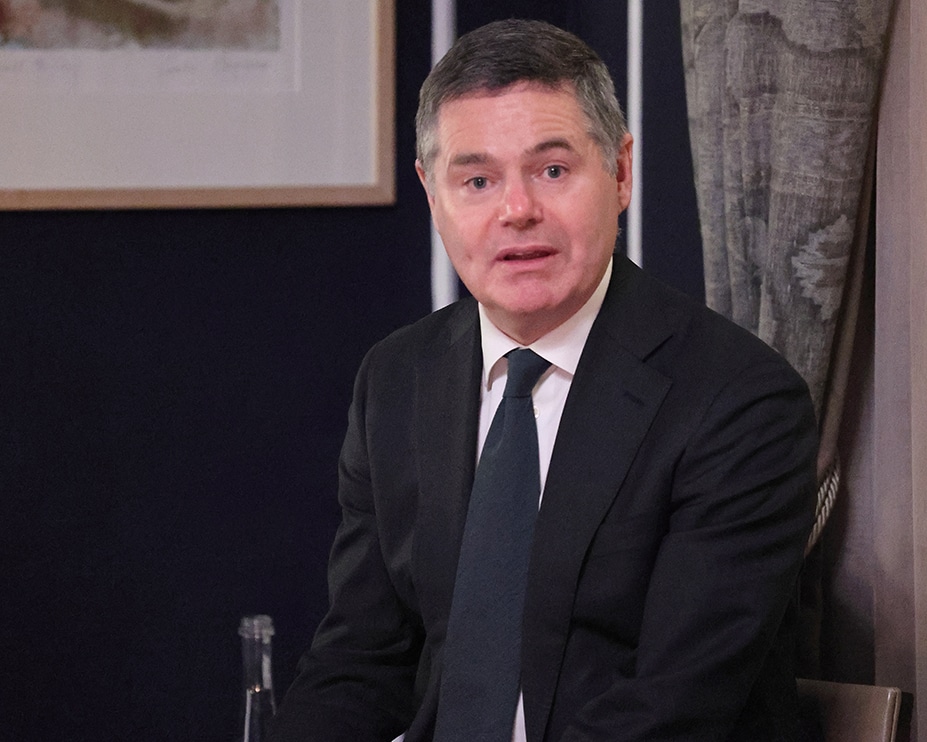
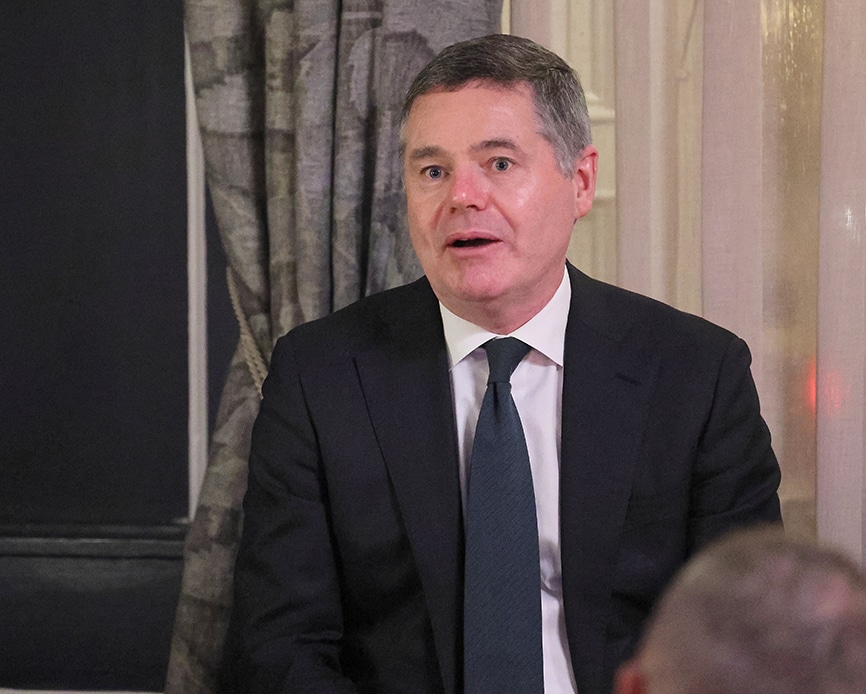
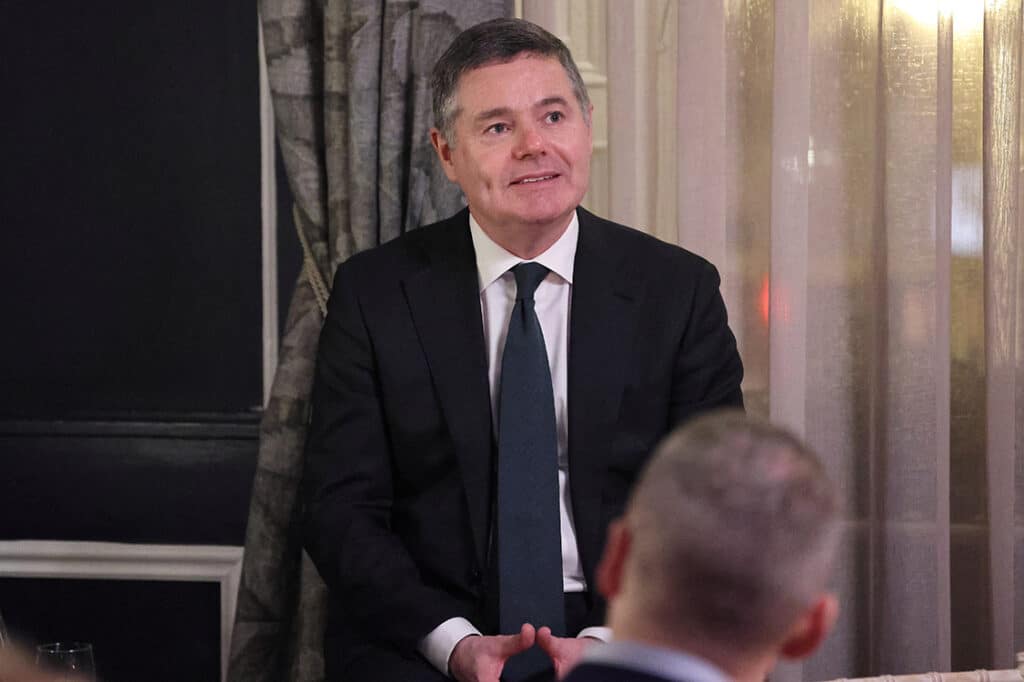

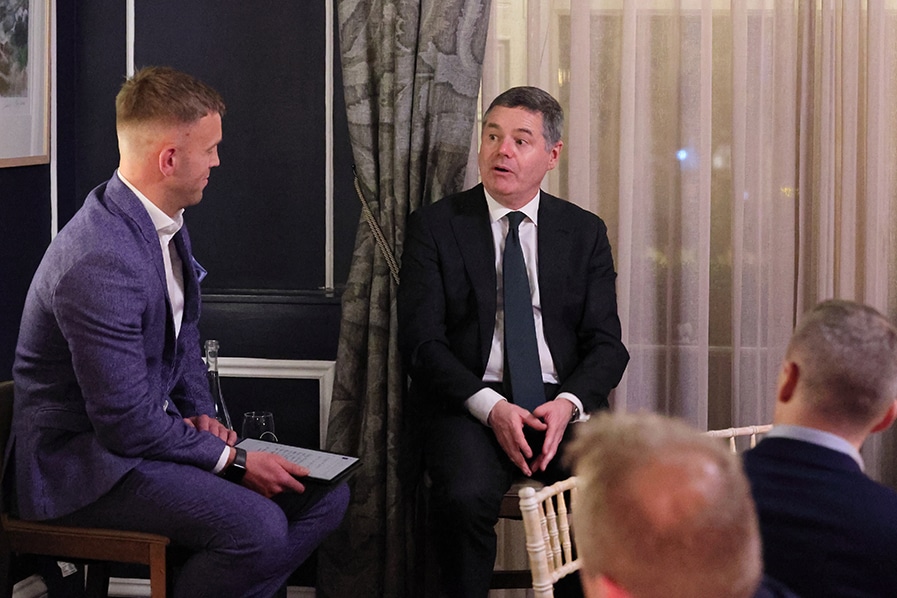

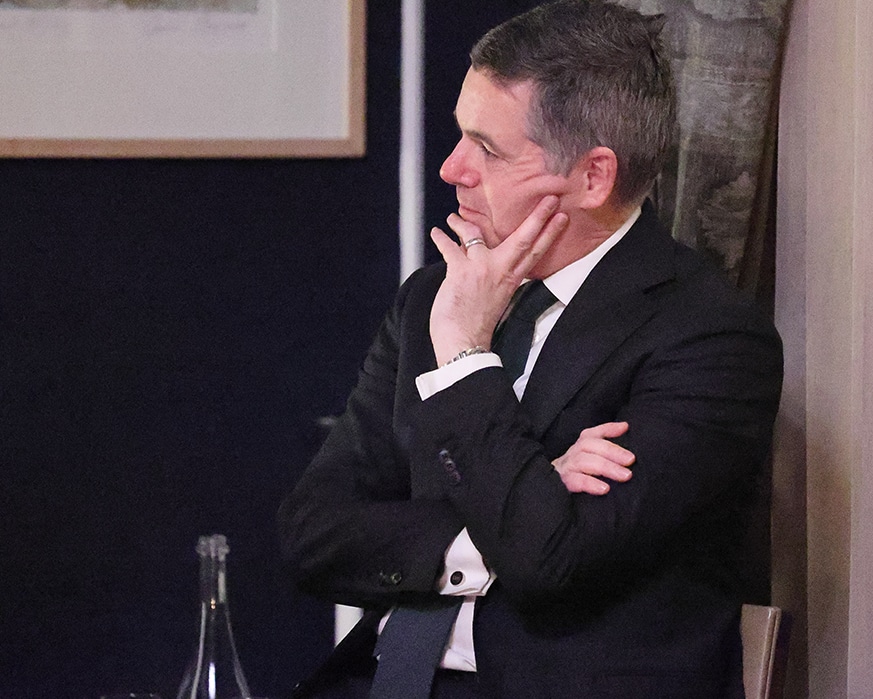
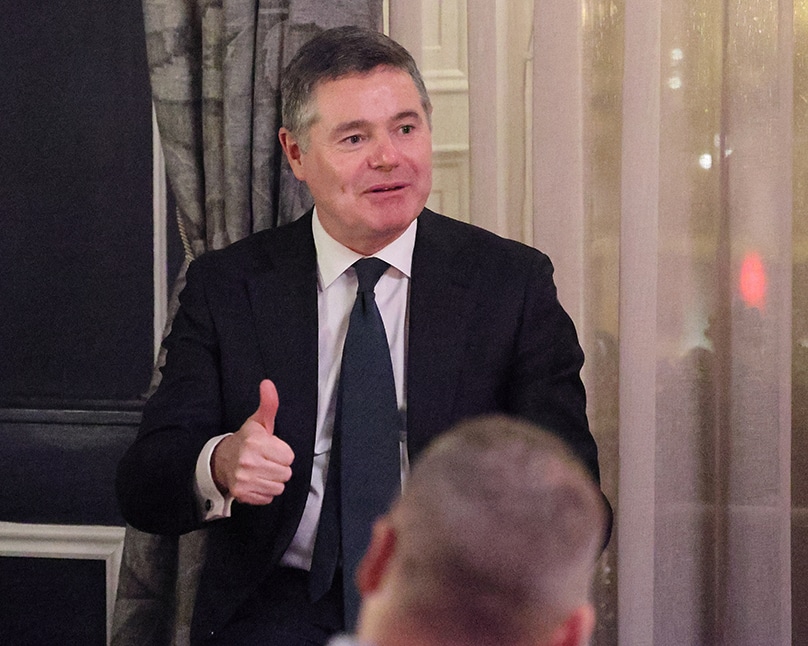
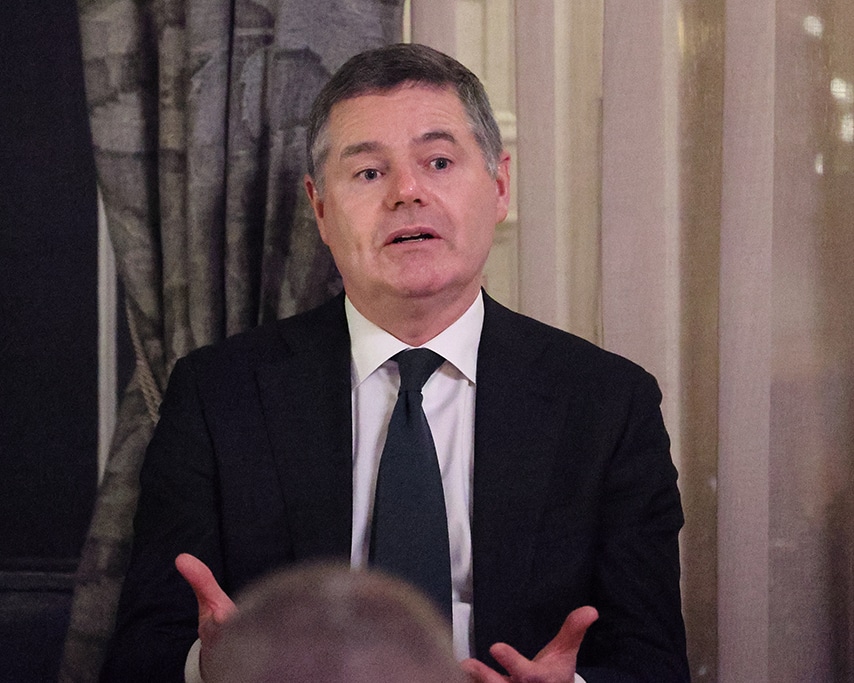
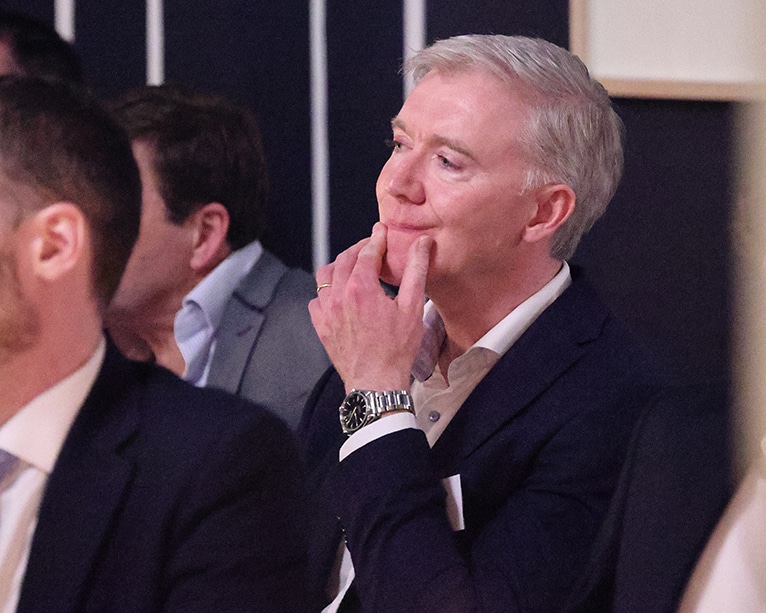
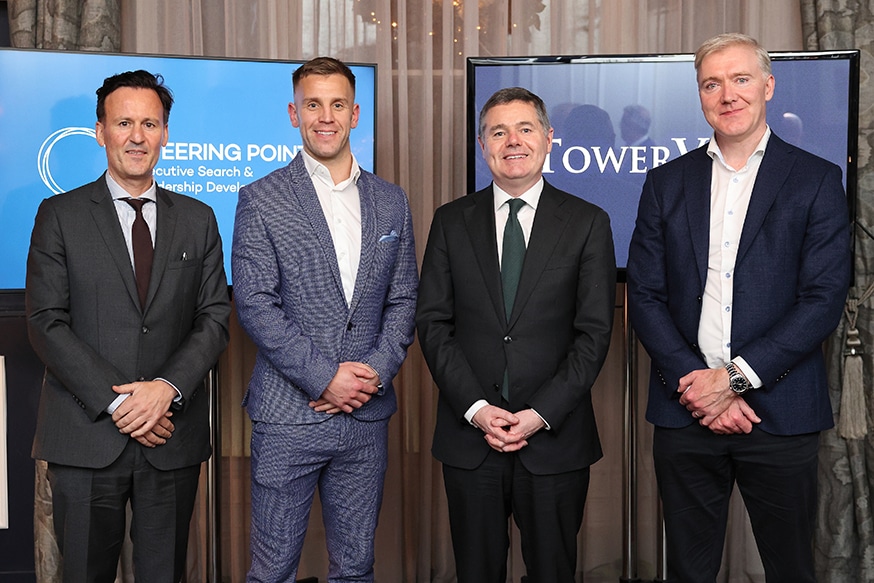
For media inquiries or to request high resolution photography from the evening contact Steering Point Group Head of Marketing Gail Finegan, gfinegan@steeringpoint.ie.

Introduction
Sometimes, even the most passionate and dedicated individuals can experience a dip in motivation and passion for their work or career. If you find yourself in this situation, you’re not alone. The good news is that there are ways to rekindle your passion and reignite your drive to excel. In this post, we’ll explore some psychological theories of motivation and social psychology concepts that can provide practical advice for reigniting the spark in your professional life.
Self-Determination Theory
First, let’s delve into the psychological theories of motivation. One such theory is the Self-Determination Theory (SDT) by Deci and Ryan (1985), which focuses on the concepts of autonomy, competence, and relatedness. According to SDT, people are more likely to be motivated when they feel a sense of control over their actions, believe they can succeed, and feel connected to others. To apply this theory to your work life, consider seeking opportunities for autonomy, setting achievable goals, and fostering positive relationships with colleagues.
Maslow’s Hierarchy of Needs
Another relevant psychological theory is Maslow’s Hierarchy of Needs (1943), which posits that people are motivated by fulfilling their basic needs before moving on to higher-order needs, such as self-esteem and self-actualisation. To rekindle your passion, examine whether your basic needs are being met at work, such as having a safe environment, job security, and social connections. If not, address these areas first to create a solid foundation for reigniting your passion.
Social identity theory
Turning to social psychology, the concept of social identity theory (Tajfel & Turner, 1986) suggests that individuals derive a sense of self-worth and belonging from their group memberships. In the context of work, identifying with your organisation or team can contribute to increased motivation and passion. To foster this sense of belonging, engage in team-building activities, share your organisation’s mission and values, and celebrate your team’s achievements.
Reigniting your passion
Now that we’ve explored some relevant theories let’s discuss practical tips for reigniting your passion at work:
- Reflect on your “why”: Revisit the reasons you initially chose your career or job, and remind yourself of what ignited your passion in the first place. This exercise can help you rediscover your purpose and motivation.
- Seek new challenges: Taking on new responsibilities or learning new skills can reignite your passion by pushing you out of your comfort zone and reigniting your curiosity.
- Connect with inspiring individuals: Surrounding yourself with passionate and motivated people can be contagious. Seek out colleagues, mentors, or role models who inspire and challenge you.
- Set SMART goals: Establish Specific, Measurable, Achievable, Relevant, and Time-bound goals that align with your values and interests, and celebrate your progress along the way.
- Practice self-care: Prioritise your mental and physical well-being by setting boundaries, managing stress, and engaging in activities that bring you joy.
- Cultivate gratitude: Regularly reflecting on your accomplishments and expressing gratitude for your job can help shift your focus from negative aspects to positive aspects of your work.
Conclusion
In conclusion, reigniting your passion for work or your career requires a combination of understanding the underlying psychological and social factors and implementing practical strategies. By drawing on the theories of motivation and social psychology, you can create a more fulfilling and passionate work life that drives you to excel.
More on Motivation
The Workplace Motivation Theory That Works
Organisational Psychology and Motivation
Emotional Intelligence and Engaging Others
References
Deci, E. L., & Ryan, R. M. (2000). The “what” and “why” of goal pursuits: Human needs and the self-determination of behaviour. Psychological Inquiry, 11(4), 227-268.
Dweck, C. S. (2008). Mindset: The new psychology of success. Random House Digital, Inc.
Maslow, A. H. (1943). A theory of human motivation. Psychological Review, 50(4), 370-396.
Pink, D. H. (2009). Drive: The surprising truth about what motivates us. Riverhead Books.
Seligman, M. E. P. (2002). Authentic happiness: Using the new positive psychology to realise your potential for lasting fulfilment. Free Press.
Tajfel, H., & Turner, J. C. (1979). An integrative theory of intergroup conflict. In W. G. Austin & S. Worchel (Eds.), The social psychology of intergroup relations (pp. 33-47). Brooks/Cole.
Vallerand, R. J., & Houlfort, N. (2003). Passion at work: Toward a new conceptualisation. In
S. W. Gilliland, D. D. Steiner, & D. P. Skarlicki (Eds.), Emerging perspectives on values in organisations (pp. 175-204). Information Age Publishing.

“Of all the things that can boost emotions, motivation, and perceptions during a workday, the single most important is making progress in meaningful work.” – Amabile and Kramer.
In their 2011 book “The Progress Principle”, Teresa M. Amabile, a Baker Foundation Professor at Harvard Business School, and Steven Kramer, PhD, Professor Emeritus in the School of Speech, Language and Hearing Sciences at San Diego State University, explain how seemingly mundane workday events can make or break employees’ inner work lives.
It’s a pivotal look at how meaning, achievement, happiness and success owe everything to the notion of everyday progress. Most especially it shows how managers can leverage progress to boost motivation and how celebrating small wins sets us up for further success in the future.
Progress and the inner life
Amabile and Kramer posit that “it’s forward momentum in meaningful work-progress that creates the best inner work lives” [1]. They suggest that while the subject of work motivation has been studied and commented upon extensively many times in the past, managers often fail to give it its due prominence in practice. In a survey asking about the keys to motivating workers, they found that “very few of our surveyed managers ranked progress first.”
Their research process included rigorous analysis of nearly 12,000 diary entries provided by 238 employees in seven companies over four months. These employees took a daily survey that sought to assess their emotions, moods, motivation levels and perceptions of work that day, as well as noting what they did and any events that stood out.
The results were striking, and resulted in Amabile and Kramer coining the concept of the “progress principle.”
“When we compared our research participants’ best and worst days (based on their overall mood, specific emotions, and motivation levels),” they write, “we found that the most common event triggering a “best day” was any progress in the work by the individual or the team. The most common event triggering a “worst day” was a setback” [2].
In terms of numbers, work progress of some kind occurred on 76% of people’s best-mood days, with set-backs occuring on just 13%. While setbacks occurred on 67% of people’s worst-mood days, and progress on just 25% of them.
Surmising, they write that, “If a person is motivated and happy at the end of the workday, it’s a good bet that he or she made some progress. If the person drags out of the office disengaged and joyless, a setback is most likely to blame” [3].
Progress affected every aspect of employees’ inner work lives. On days when they made progress, participants reported more positive emotions, became more intrinsically motivated and experienced more positive perceptions, i.e. seeing challenges as something exciting to be overcome rather than something frustrating that was holding them back.
The reverse proved true as well. On setback days, mood suffered, with feelings of fear, frustration and sadness rife. Motivation slumped and their perception of events skewed significantly more to the negative, both in how they viewed the work itself and also those around them.
The necessity of meaning
Progress, then, is key. But it must be progress that matters. That doesn’t mean the definition of progress must be limited – only applying to some seismic breakthrough, a rare, nigh impossible feat miraculously overcome. It simply means that it must be more than just progress for progress’ sake in a field that ultimately achieves little or nothing.
An example they give is washing pots in a kitchen or checking coats at a museum. Though progress is tangible – one more pot washed, one more coat checked – it feels purposeless on any grander scale and may not provide any deeper satisfaction despite the employee having worked hard. “The likely cause [of this dissatisfaction],” they write, “is your perception of the completed tasks as peripheral or irrelevant. For the progress principle to operate, the work must be meaningful to the person doing it” [4].
They cite how in 1983, when trying to entice John Sculley to leave PepsiCo to become Apple’s new CEO, Steve Jobs reportedly asked him, “Do you want to spend the rest of your life selling sugared water or do you want a chance to change the world?”
Meaning matters. John Sculley wanted it, pursued it, and the rest is history.
Becoming CEO of Apple is obviously a high-end example, but there are all sorts of roles in which we can find meaning, so long as the work matters to us. What brings about that feeling will change person to person – some will derive satisfaction from writing a line of code that helps streamline a process, others from making a good presentation that helps entice new clients, others from being kind and personable behind the shop counter ensuring customers keep coming back. What you’re doing matters less than how it makes you feel.
Celebrate good times, come on
We derive satisfaction from progress, from making breakthroughs big and small. As already noted, they boost our mood, motivation and perceptions. As Amabile and Kramer note, “Many of the progress events our research participants reported represented only minor steps forward. Yet they often evoked outsize positive reactions.” 28% of incidents that only had a minor impact on the project at hand were found to have a major impact on people’s feelings about it.
On the other side, small losses or setbacks were also found to have an outsized negative impact. In fact, “our study and research by others show that negative events can have a more powerful impact than positive ones. Consequently, it is especially important for managers to minimise daily hassles” [5].
One way managers can ensure positive progress is felt and maximised is to celebrate small wins.
Writing in Forbes, Whitney A. White, CEO & founder of Afara Global, writes that when starting a new business or taking on a new project, “It can be tempting to focus on a big, shiny end result instead of the smaller steps along the way. While holding a great vision can be helpful when going into a new venture, it can also distract from the important victories you need to maintain momentum” [6].
White suggests tracking small victories, taking time to celebrate them, even if it’s just ten or fifteen minutes, and using this positivity to feed future momentum.
Also writing in Forbes, Jody Michael, CEO of executive coaching firm Jody Michael Assoc., points out that she often encounters superstition when it comes to celebrating small wins.
“People don’t want to get too excited about an accomplishment,” she says, “because they don’t want to end up disappointed in the end. They don’t embrace the wins for fear that a loss is coming” [7].
This is the wrong approach. Yes, losses are coming. No matter what you do, how much you plan and how hard you work, something bad will happen; that’s life. Repressing positivity as a preparatory measure for the inevitable equal and opposite reaction that’s surely coming does not keep negative events at bay. So celebrate the positive moments while they’re here. Your spirits will be dampened by the bad times, so make sure they’re lifted by the good ones.
Michael continues, “a belief system that dampens the opportunities to celebrate wins and over-indexes on the losses isn’t a great strategy for your physiology or for your psychology” [8].
From a managerial standpoint, celebrating the small wins is a simple and crucial way to aid employee satisfaction and motivation. A study by the enterprise collaboration web app Socialcast found that, “69% of employees would work harder if they felt their efforts were better appreciated” [9].
Celebrating small wins fosters a positive work environment, builds momentum and helps improve your employees’ inner work life, which, as we’ve already noted, is pivotal to their performance.
Inner life management
Amabile and Kramer lay out their strategy for how managers can foster a work environment that enhances their employees’ inner work lives. They propose utilising what they term “catalysts” and “nourishers”.
They define catalysts as “actions that support work. They include setting clear goals, allowing autonomy, providing sufficient resources and time, helping with the work, openly learning from problems and successes, and allowing a free exchange of ideas. Their opposites, inhibitors, include failing to provide support and actively interfering with the work” [10].
They define nourishers as “acts of interpersonal support, such as respect and recognition, encouragement, emotional comfort, and opportunities for affiliation. Toxins, their opposites, include disrespect, discouragement, disregard for emotions, and interpersonal conflict” [11].
They note that while their proposition is not radical – in fact, to many it may seem like Management 101 – their studies show that many managers fall short of even these basics.
It would be easy to read that and think, “well, sure, but not me, or not any other decent managers.” And maybe not. But it’s worth giving it further consideration. Just because most managers know what they should be doing doesn’t mean they are doing it.
Think of it like any other aspect of your lifestyle. You may know that your mental and physical health is better when you eat healthily every meal and exercise everyday. Does that mean you never slip up? You may know that you gain little and feel bad about yourself after a prolonged period scrolling your phone, but next time you’re bored on the sofa, what do you think you’ll find yourself doing?
Management is no different. Just because you know you should be encouraging, open, attentive, patient and generous doesn’t mean there aren’t times you fall short. How we are on our worst day says a lot more about our character than who we are on our best. So basic as it may seem, try to pay active attention going forward, self-assess. Ask yourself, “am I actually enacting all the positive management traits I know and believe in? Am I practising what I preach? If not, can I start now?”
Small wins, big progress
The progress principle measures how our inner work life, consisting of our mood, motivation and perception, are affected by the progress we’re making. Even small progress has a drastic impact. That impact can be maximised by celebrating every win, no matter how small. A lot of that responsibility falls to managers. It is their job to foster a work environment that allows for progress and duly celebrates it, leading to a happier, more motivated and productive workforce. Understanding it is easy. Putting it into practice requires one to self-reflect and actively work to enhance the inner lives of their employees.
More on Purpose
Professional Meaning: Why it’s Important and How to Find it
Creating and fostering cultures of meaning
Crafting: How to Increase Engagement, Performance, and Job Satisfaction
References
[1] https://hbr.org/2011/05/the-power-of-small-wins
[2] https://hbr.org/2011/05/the-power-of-small-wins
[3] https://hbr.org/2011/05/the-power-of-small-wins
[4] https://hbr.org/2011/05/the-power-of-small-wins
[5] https://hbr.org/2011/05/the-power-of-small-wins
[10] https://hbr.org/2011/05/the-power-of-small-wins
[11] https://hbr.org/2011/05/the-power-of-small-wins

“The most powerful person in the world is the storyteller.” – Steve Jobs
Stories are powerful. They’ve been pivotal to human development and understanding since the days of hunter-gatherers congregated around the fire. They are our means of connection and often our route of escape. We are a subjective species constantly trying and failing to make sense of the objective world around us. As such, we are nothing more than the story we tell ourselves.
In the realm of business, harnessing the narrative force of storytelling has become a pivotal element in crafting compelling brands that resonate deeply with audiences.
In today’s competitive market, where products and services often compete in parity, the difference between success and obscurity often lies in the ability to captivate, engage, and emotionally connect with consumers. Storytelling in branding serves as a potent vehicle, enabling companies to transcend the mere transactional exchange and establish a profound, enduring relationship with their audience.
Building a brand story
A brand story should be more than just a list of key milestones and achievements. It should represent who a company is, making clear not just what they do but why and how.
Too often, brands fail to encapsulate themselves in their story. They get too technical, alienating the average consumer, or too vague, seeking to build a broad church but failing to articulate what it is that makes them different. It’s a difficult balance to strike, but get it right and you will engage your audience like never before.
Engaging on an emotional level
At the core of effective storytelling in branding lies the ability to evoke emotions. Emotions shape perceptions, drive decisions, and create lasting impressions. A well-crafted brand story has the potential to evoke empathy, joy, nostalgia, or even a sense of aspiration within consumers, fostering a deep emotional connection with the brand.
Consider iconic brands like Nike, whose narrative isn’t just about shoes and sportswear but about the human spirit, determination, and overcoming adversity. Their “Just Do It” campaign resonates with consumers on a personal level, motivating them beyond mere athletic gear and positioning Nike as a symbol of empowerment.
To see the full power of storytelling in effect, look no further than Save the Children. As Khushboo Nangalia notes in her TedTalk “The Undeniable Power of Business Storytelling,” [1] when trying to raise funds for children suffering in Africa, Save the Children put out two advertisements. The first featured statistics documenting the horrifying conditions many children were forced to contend with in their daily lives. The second also noted the magnitude of the problem but honed in on a specific example, telling a “day in the life” story of Rokia, an eight-year-old girl in Mali suffering from serial hunger. The audience exposed the second advertisement donated double that of the first.
It’s not surprising. The late Roger Ebert, a leading US film critic, famously referred to cinema as an “empathy machine”. This description is applicable to all storytelling. Stories are a way of seeing the world through another’s eyes, of filtering our own lived experience through theirs. This is true not just metaphorically but scientifically.
Uri Hasson, professor of Psychology and Neuroscience at Princeton University, found that our brains respond to stories in the same way regardless not just of who we are but how we hear them [2].
Hasson and his colleagues had study participants lie in an fMRI scanner while watching episodes of the BBC series Sherlock and Merlin while the machine measured their cognitive activity. They then recounted the story as a recording. This recording was then listened to by another set of participants whose cognitive activity was also being monitored. Hasson found that the brain patterns of the participants watching the story and those hearing it recounted were aligned throughout, even though watching a clip and imagining it from someone else’s description are two very different things.
In another experiment, Russian speakers and English speakers listened to the exact same story told in their respective languages, and brain activity still aligned [3]. Stories connect us. Hasson concluded that communication was really “a single act performed by two brains” [4]. A speaker’s brain generates a sound wave and that sound wave then influences the brain response in a listener, bringing the two brains into alignment. It’s a dance; one brain’s steps move in rhythm with another’s to form something complete.
Melanie Green, a professor of Communication at the University of Buffalo, found something similar. According to her study, people are more likely to make changes to their lifestyle and health habits if they see a character they relate to make the same change [5].
Meanwhile, psychologist Jerome Bruner says that facts are twenty times more likely to be remembered if they’re part of a story [6].
Building authenticity and trust
Authenticity is the bedrock of effective storytelling. Consumers are increasingly drawn to brands that showcase transparency and authenticity in their narratives. A compelling brand story, rooted in authenticity, builds trust and credibility, fostering a sense of loyalty among consumers.
Too often brands are afraid to be truly authentic because it means showing fallibility. Instead, their message gets lost in a milieu of jargon and hyperbole. Companies are trying to sell themselves and as such go too far. Desperate to stand out from the competition, they oversell and end up falling back on meaningless corporatespeak or Edenic overpromises.
When interviewed by Harvard Business Review, Robert McKee, author of Story: Substance, Structure, Style, and the Principles of Screenwriting, held up by many in Hollywood as the bible of storytelling, was asked what was wrong with companies who paint too positive a picture.
“It doesn’t ring true,” he responded. “You can send out a press release talking about increased sales and a bright future, but your audience knows it’s never that easy. They know you’re not spotless; they know your competitor doesn’t wear a black hat. They know you’ve slanted your statement to make your company look good. Positive, hypothetical pictures and boilerplate press releases actually work against you because they foment distrust among the people you’re trying to convince” [7].
By all means sell your brand – who you are, what you stand for, why it matters, why you’re different – but do so honestly. Otherwise, you risk losing credibility.
Take the outdoor clothing company Patagonia, for example. Patagonia often draws attention to its commitment to environmental sustainability and ethical business practices in its storytelling. But it’s able to do so because it can back its words up in action. In 2022 the company’s owner and his family transferred their ownership of Patagonia, valued at about $3 billion, to a specially designed trust and a nonprofit organization fighting climate change [8].
We accept the story because it’s authentic. Not every company will be able to tell a similar story to Patagonia (if only they could), but every company can be honest about what they stand for and how they put those values into practice each and every day. And in the era of mass corporate scrutiny, you can bet those brands that make disingenuous claims about their values will be rooted out quickly.
Tips for creating a good brand story
All stories follow a pattern. Beginning, middle, end; three-act structure; whatever you want to call it. The key thing is to build a narrative and take your audience on a journey. That doesn’t mean boring them with a chronological explanation of how you got where you are. Stories trade on emotion, so make your story personal, something that connects.
There’s no one formula to it. If you’re the company founder you can tell your own story (provided it’s relevant) – why this means so much to you, the gap in the market you’re filling, and why it’s so vital. Perhaps if your product is seeking to help people you can give a customer story depicting life before and after your product. Either way, make it relatable. Your audience is not an amorphous single entity, it is a collection of people who understand what it is like in the real world. They’ve all struggled. They’ve all failed. Just as you have. Don’t be afraid to let them know that.
A lot of the variables will depend on who you’re speaking to. It’s vital that you know your audience. Who are they? What drives them? What is your best point of connection? Once you know all that, you can define your core messaging around it. Writing in Forbes, Candice Georgiadis, social media influencer and founder of Digital Day Inc, a social media and marketing agency in California, suggests a useful way to frame your message is to make sure you’re explaining how: your brand helps your audience to solve their problem with your solution [9].
Once you understand your audience and have decided on your messaging, you need to decide the best channel for your story. In the modern climate there are a variety of key methods, be it video, text, audio, social media, traditional media, etc. The best medium will be dependent on who you’re trying to reach and what you’re trying to say. Alter your message according to the medium – a message designed to be read in a broadsheet will obviously not work well on TikTok and vice versa.
Don’t be afraid of detail. Detail helps people relate. Audiences don’t love Spider-Man because he has a cool suit and swings from buildings (though it does help). They like him because he’s awkward, nerdy, kind-hearted, and – in spite of the superpowers – he reminds them of what they were like at that age. That means that when he does swing from buildings, it’s all the more easy for them to root for him. Give your audience reasons to root for you. Help them connect.
The power of story
Stories are the means by which we see the world. They are empathy machines that connect us to others. There is no narrative structure to life and yet we impart one on it all the same because we want stories. We want connection. We want to feel like we’re part of something bigger than ourselves. People don’t want numbers and they don’t want perfection. They want honesty and authenticity. Too often, though, they are denied it by brands that choose to over-indulge on technicalities – “in-baseball” brags that non-experts in their field couldn’t possibly understand – or that opt for vague, glossy sloganeering, trying so hard to appeal to everyone that they end up appealing to no one.
A better option is to eschew such approaches altogether. Instead, do the thing that humans have been doing day-to-day for century upon century: tell a good story. You might be surprised how well it turns out.
More on Brand Building
Neuromarketing and the Psychology of Branding with Matt Johnson
Building Influential Brands That Connect with Tessa Misiaszek
References
[1] https://www.youtube.com/watch?v=CabbUUrjFck
[2] https://paw.princeton.edu/article/clicking-how-our-brains-are-sync
[3] https://blog.ted.com/what-happens-in-the-brain-when-we-hear-stories-uri-hasson-at-ted2016/
[4] https://paw.princeton.edu/article/clicking-how-our-brains-are-sync
[5] https://www.youtube.com/watch?v=WKIZ0bicfFw
[6] https://www.harvardbusiness.org/what-makes-storytelling-so-effective-for-learning/
[7] https://hbr.org/2003/06/storytelling-that-moves-people
[8] https://www.nytimes.com/2022/09/14/climate/patagonia-climate-philanthropy-chouinard.html

Introduction
Red teaming refers to critically examining plans, policies, systems, and assumptions by taking an adversarial stance. This approach, which can be implemented by either an internal team or an external group, aims to emulate an outsider’s perspective. Its primary objective is to counteract cognitive biases like groupthink and confirmation bias, often hindering effective decision-making and critical thinking within individuals or organisations.
Red teaming, which is deeply rooted in military strategy and cybersecurity, has evolved into a formidable tool for enhancing decision-making in business and personal spheres. It involves adopting an adversarial stance to examine plans, strategies, and assumptions critically. By viewing challenges through the lens of a potential competitor, red teaming encourages a deeper level of critical analysis, which is crucial for robust decision-making. In an era of complex challenges and swift changes, the ability to foresee and counteract potential threats proves invaluable. Red teaming exposes vulnerabilities and uncovers opportunities for innovative solutions and strategic foresight. This proactive approach goes beyond finding faults; it enables more informed, resilient, and effective decisions in our dynamic world.
Implementing Red Teaming in Decision-Making Processes
To implement red teaming in business or personal settings, one must understand the necessary steps and be aware of potential challenges and their solutions.
Steps to Incorporate Red Teaming:
1. Define Objectives: Articulate your goals with red teaming clearly. In business, this may involve refining a product launch strategy; in personal life, it could mean choosing the most suitable educational path.
2. Assemble a Diverse Team: Bring together individuals with different perspectives and expertise. Diversity in thought and experience is essential for effective red teaming.
3. Simulate Adversarial Scenarios: Motivate the team to think like opponents. Red teaming includes questioning assumptions, pinpointing potential weaknesses, and proposing alternative strategies.
4. Constructive Feedback Loop: Establish an environment where the team values and acts upon feedback. Regularly review the outcomes of red teaming exercises and adjust as necessary.
Red Teaming in Various Contexts
Cybersecurity: In cybersecurity, red teams play an essential role. Comprising ethical hackers, these teams carry out simulated cyber-attacks to uncover and tackle vulnerabilities within an organisation’s network. For example, a red team might initiate a controlled phishing campaign to assess employees’ awareness and the company’s email security protocols. Red teams bolster the organisation’s overall security posture by identifying and addressing these weaknesses before actual attackers do. This proactive approach strengthens defences and nurtures a culture of continual vigilance and improvement.
Military Strategy: Red teaming entails assembling a group to act as a potential adversary to test and evaluate military tactics and strategies. An illustrative example is using red teams in war games, challenging existing plans and exposing potential weaknesses in defence strategies. Employing red teaming strategies ensures that military operations remain resilient to unexpected challenges and adaptable to evolving threats.
Business and Management: Red teaming is critical in refining strategies and decision-making processes in the business sector. A well-known corporation might employ a red team to contest the launch strategy of a new product. The team might unveil overlooked market dynamics or potential consumer reactions by taking on the competitor’s role, leading to a more comprehensive and robust market entry strategy. Such critical evaluation prevents costly mistakes and encourages innovative thinking.
Critical Thinking Exercise: Beyond these sectors, red teaming is an invaluable, helpful thinking exercise in personal decision-making. Whether appraising career moves, investments, or daily choices, applying a red team mindset involves actively seeking potential pitfalls and alternative outcomes. This methodology propels individuals out of their comfort zones to question their assumptions and ultimately make more considered and balanced decisions.
Challenges and Solutions:
• Resistance to Criticism: Overcome the natural resistance to criticism by fostering a culture that values constructive feedback as a means for improvement.
• Groupthink: Counter groupthink by encouraging independent thought and ensuring the team hears all voices, regardless of hierarchy or role.
• Balancing Pessimism and Realism: While red teaming can lead to pessimism, it’s crucial to maintain a balance between identifying potential problems and keeping a realistic perspective.
By integrating these steps and addressing the challenges, organisations and individuals can use red teaming effectively to enhance their decision-making processes. The key lies in seeing red teaming not as a one-off exercise but as a continuous practice that evolves and adapts to various situations and objectives.
The Psychology Behind Red Teaming
Red teaming’s efficacy as a decision-making instrument stems from psychological principles addressing the cognitive biases that frequently influence human judgment. By incorporating adversarial thinking, decision-makers use red teaming to challenge these biases, promoting a balanced and thorough evaluation of strategies and assumptions.
Adversarial Thinking and Cognitive Psychology: The heart of red teaming lies in adversarial thinking, upheld by psychological theories that value multiple perspectives. Cognitive psychology suggests that considering an issue from diverse viewpoints yields a more rounded understanding. Dialectical thinking resonates with this approach, as it involves decision-makers weighing conflicting ideas to reach a comprehensive conclusion and actively seeking out and scrutinising alternative viewpoints.
Role of Cognitive Biases in Decision-Making: Research in judgment and decision-making identifies cognitive biases, such as anchoring and overconfidence, that can lead to inferior decisions, especially in negotiations. Acciarini et al. (2021) demonstrate how these biases, affected by both internal perceptions and external changes like digitalisation, significantly influence strategic decisions.
Overcoming Cognitive Biases through Red Teaming: Red teaming is a strategy to combat biases, cultivating an environment where scepticism and critique become essential. By adopting a perspective that contests the prevailing status quo, red teaming engenders a deeper analysis less susceptible to biases such as confirmation bias—where we favour information that corroborates our beliefs—and availability bias—where the most accessible knowledge disproportionately influences our judgment.
Comprehensive Decision-Making: Korteling and Toet (2020) offer a neuro-evolutionary explanation for these biases, attributing them to the design characteristics of our brains, honed to ensure survival in ancestral environments. Red teaming counters these innate tendencies by promoting critical evaluation and open-mindedness, leading to more informed, innovative, and resilient decisions.
This integration of insights provides a nuanced understanding of red teaming’s role in decision-making. It ensures that decisions are well-considered, multifaceted, and adaptable—essential in both business and personal realms. This psychological congruence renders red teaming invaluable for navigating complex decisions and challenges in today’s rapidly evolving world.
Real-Life Applications of Red Teaming
In Business: Google’s AI Red Team A compelling example of red teaming in business is Google’s application in AI system security. Google’s AI Red Team is a specialised unit that addresses complex challenges in a high-tech environment. This team’s primary function is to simulate various attacks on AI systems, from extracting training data to intricate tactics like backdooring AI models. By emulating these threats, the AI Red Team enables Google to predict and neutralise potential vulnerabilities in its AI systems.
This proactive stance has proved crucial in identifying and mitigating risks shaping the development of safer AI technologies. Google’s endeavour highlights the progressive nature of red teaming: from military and cybersecurity origins to a vital instrument in safeguarding AI innovations. The need for AI expertise to tackle AI-specific threats is one of the lessons from this red teaming experience, underscoring the flexibility and depth of red teaming methods in contemporary business contexts.
In Personal Life: Everyday Decision-Making Red teaming also applies to personal decision-making, acting as a critical analysis tool. Consider a family planning a holiday. They employ a red team strategy rather than selecting the most attractive destination. One member plays the ‘adversary’, raising issues like budget constraints, travel restrictions, or suitability for all ages. Adopting a red team approach, the family thoroughly assesses all options, considering factors they might have initially overlooked. The family ultimately decides on an option accommodating everyone’s preferences and practical needs, demonstrating how red teaming can transform routine decisions into well-considered choices.
These instances from business and personal life showcase the practicality and adaptability of red teaming. Whether ensuring the security of cutting-edge technology or making day-to-day life decisions, red teaming provides a systematic approach to problem-solving that is both effective and versatile.
Conclusion
Red teaming, as demonstrated, is a versatile and potent tool that significantly enhances decision-making in both business and personal contexts. It advocates for an adversarial perspective, revealing potential vulnerabilities and biases in strategies and assumptions. From Google’s pioneering use of red teaming in AI system security to its application in everyday life, this method has proved its worth in various scenarios. Red teaming ensures more robust and resilient decisions by nurturing critical thinking, challenging established viewpoints, and promoting a culture of meticulous evaluation. The imperative is clear: whether you’re at the helm of a business or steering through personal choices, integrating red teaming into your decision-making can bring considerable advantages. Adopt this approach to tackle complexities with greater assurance and foresight.
More on Decision-Making
Why You Should Delegate – And How To Do It Effectively
The Evolution of Great CEO Leadership
Stress Management and Leadership Through Mindfulness
References
Caputo, A. (2013). A literature review of cognitive biases in negotiation processes. International Journal of Conflict Management, 24(4), 374-398. https://doi.org/10.1108/IJCMA-09-2012-0074
Korteling, J. E., & Toet, A. (2020). Cognitive biases. In Encyclopedia of Behavioural Neuroscience. Elsevier. https://doi.org/10.1016/B978-0-12-809324-5.23685-X
Acciarini, C., Brunetta, F., & Boccardelli, P. (2021). Cognitive biases and decision-making strategies in times of change: A systematic literature
For an in-depth understanding of red teaming in AI, refer to Google’s AI Red Team article by Daniel Fabian, “Google’s AI Red Team: The Ethical Hackers Making AI Safer”, Google Blog, July 19, 2023.

Global Overview: The Tapestry of Interconnectedness
As we progress into the 21st century, we’re becoming more connected than ever, breaking down barriers between countries and industries. Our ability to adapt to digital changes and work together effectively shapes today’s success. It’s not just about your contacts but about how well you can network and team up with others.
Consider how digital advancements are transforming how we do business: Teams spread across the globe can work together seamlessly in real-time as though they were side by side, using platforms like Slack and Asana. With IoT technology, a farmer can enhance crop production by leveraging insights from data experts halfway around the world. What once seemed like scenarios from a sci-fi novel are now the foundations of today’s business world.
Some events have sounded a loud signal for the need to be even more connected. The recent global pandemic stands out in this regard. Businesses quickly adjusted and turned obstacles into openings for growth through collaboration powered by digital tools. Firms that had previously laid out digital strategies with a timeline of years had to accelerate their plans, implementing them within weeks or even days.
Contemporary Business Landscape: Collaboration as the New Competition
Today’s business scene puts a high value on cooperation, making it a driving force for innovation and growth. It’s become evident that bringing together various resources, expertise, and abilities is far more effective than individual efforts. The advantage now is with those who establish strategic partnerships, from start-ups to large tech firms.
We’re witnessing an increase in unlikely partnerships: auto manufacturers teaming up with software giants to pioneer self-driving cars and significant retailers working with tech start-ups to transform the shopping experience with AI. These partnerships are more than simple alliances; they represent a fusion of visions to create what they couldn’t on their own.
Digital platforms are at the core of this new wave of cooperation. They enable and accelerate partnerships, creating spaces where creative concepts become reality. Consider Alibaba’s rural Taobao initiative, which expands e-commerce to the farthest reaches, or GitHub, where developers pool their talents to build the latest software innovations. These platforms have grown beyond mere tools; they’re thriving habitats that nourish the collaborative ethos of our era.
This move toward joint ventures reflects a broader trend: a preference for collective achievement over solo victories. As we weave more connections into the global business fabric, we find its true power comes not from competing entities but from the synergy of working together, crafting a robust, agile web of mutual progress.
Introduction to the Shift in Organisational Strategy
We are rewriting the playbook for corporate strategy. Competition used to define the business battleground, but now, collaboration is the leading narrative. Previously, businesses operated on a win-lose basis, gaining an edge only at another’s expense, and they guarded their knowledge fiercely, only partnering up when necessary.
The script has flipped today, especially in the tech sector, which often signals new trends. Look at Apple and IBM, for instance. These giants, once stark contrasts in business ideology, have joined forces. Their collaboration has produced a series of business apps that combine IBM’s analytical excellence with Apple’s superior design and ease of use. This partnership has led to breakthroughs that would have been unimaginable for either company alone.
Types of Collaborative Relationships
Working with suppliers has become more integrated than ever. Take Toyota’s strategy, for example, where suppliers contribute from the very beginning of designing a new car. This joint effort makes the production process more efficient and creates a culture of ongoing improvement and creativity, placing Toyota at the top regarding car reliability and effectiveness.
The idea of ‘co-opetition,’ where competitors work together, has evolved from a contradiction to a clever tactic. A case in point is the streaming industry, where rivals share the same cloud infrastructure to manage the vast amount of data and viewership they receive. This collaboration on the technical necessities allows them to concentrate on what differentiates them: their content and how users interact with their services.
User involvement is reshaping how businesses think about their products. LEGO’s platform for user-created designs is a standout example of this. It invites the brand’s fans to contribute their creations, allowing LEGO to actively engage with its community and draw from a fountain of innovation that continuously rejuvenates its product line with new and captivating designs. This example illustrates the importance of organisational awareness in harnessing powerful relationships with product users to improve business strategy.
Drivers of Collaboration
The drive for collaboration comes from several directions, but it essentially boils down to three powerful forces: technology, economic pressures, and societal shifts.
Technologically speaking, the advent of cloud computing has been a game-changer. Businesses can tap into enormous computing resources, allowing rapid scaling and innovation. This shift has democratised the business landscape, enabling small ventures to compete with and sometimes partner with larger corporations.
Economically, the imperative to remain competitive in a fast-paced market cannot be overstated. Working together has become appealing and essential in industries like biotech, where research and development costs are sky-high and risks loom large. As a result, we’re seeing a surge in partnerships where companies share the challenges and rewards of innovation.
Social dynamics play a crucial role as well. Social dynamics provide the key pillars necessary to facilitate positive social relationships in which both parties have mutual trust and share opinions and ideas. Social media has empowered consumers to have a stronger voice than ever. They are no longer just the audience; they’re active players. This has encouraged businesses to engage in more open conversations with their audience, inviting them to contribute to product development and marketing campaigns. This two-way approach enhances the customer experience and fosters more substantial brand commitment.
In navigating these waters, companies realise that collaboration isn’t just a pathway to success—it’s a vital strategy for growing, innovating, and thriving in a world that’s becoming more interconnected by the day.
Benefits and Challenges of Collaboration
While full of potential, the terrain of collaboration is also dotted with obstacles. On the positive side, collaboration can spark a fusion of ideas that drives innovation forward. Look at the aerospace sector, for instance, where Boeing and Lockheed Martin set aside rivalry to form the United Launch Alliance, combining their knowledge to push the boundaries of space technology and exploration. Such alliances can lead to cost efficiencies, shared risks, and a boost in innovative pace.
However, collaboration comes with its own set of risks. Differences in goals, organisational culture, and disputes over intellectual property rights can sour what started as promising partnerships. The failed DaimlerChrysler merger is a stark reminder of what happens when high hopes meet harsh realities, highlighting the importance of clear communication, shared objectives, and cultural synergy.
The role of governance and management is critical in collaborative efforts. Influential leaders can steer through the complexities of joint endeavours, bringing together different partnership components under a unified purpose. Robust governance systems are essential, ensuring that while common aims drive the alliance, each participant’s unique identities and ambitions are respected and preserved.
Conclusion: A New Ethos for Business
The move from competing to collaborating marks a profound shift in business philosophy, not merely a tactical switch. It’s about understanding that real progress is made not by racing ahead solo but by advancing together in our hyper-connected world.
Visionaries in the field foresee when collaboration becomes the norm, not an outlier. In this future, companies clinging to their niches, protective of their turf, will be outstripped by those who extend a hand, forge connections, and form partnerships. It’s an era that will prize collective success and innovation as the building blocks of advancement.
Looking forward, it’s evident that the spirit of collaboration will define business operations and their broader purpose. We’re approaching a time that holds out the hope of joint achievement and shared prosperity—a time when we all grow by supporting each other.
More on Teamwork
The Power of Team Clusters: A People-Centric Approach to Innovation
More on Organisational Strategy
A Strategic Masterclass with Rita McGrath (The 1% Podcast)
Mastering Change and Complexity: Strategic Leadership in an Uncertain Business World

Introduction
Attention is often as central to our thoughts and actions as it is overlooked. This concept, described by the Stanford Encyclopaedia of Philosophy as ‘the selective directedness of our mental lives’, is more than just our brain’s spotlight. It’s a key factor in everything we do, think, or perceive, yet most of us hardly consider it. And if the definition is accurate, we have control over this selective directedness. How, then, can we recognise its far-reaching effects and control it to maximise its usefulness?
Thinking our way to success
Consider the way attention shapes our life paths. The focus of our attention, as author Winifred Gallagher argues in her book ‘Rapt’, can have lasting impacts on our lives. Our chosen activities, relationships, and even our thought patterns determine the course of our lives. This notion finds strong support in scientific research. Studies by Segerstrom and Sephton (2012) and Linley et al. (2011) highlight the impact of positive thinking and self-focus on personal success and self-confidence.
The boredom and anxiety tightrope
Harnessing attention, though, is a challenging feat. It’s a balancing act between pushing boundaries and managing tasks – like walking the tightrope between boredom and anxiety. As psychologist Mihaly Csikszentmihalyi calls it, achieving this ‘flow’ state marks the pinnacle of attention’s potential. But, what’s noteworthy is that attention is crucial not only for work but also for how we spend our leisure time. A strategic and thoughtful approach to leisure activities primes our brain for optimal engagement, leading to more balanced and fulfilled lives.
Understanding our cognitive bandwidth
But attention isn’t without its pitfalls. The phenomena of inattentional blindness and divided attention highlight the limitations of our cognitive bandwidth. Psychologist Daniel Simons demonstrated how our intense focus on a task could make us oblivious to other stimuli. Similarly, trying to multitask can stretch our attention thin, leading to mistakes. Steve Jobs, co-founder of Apple Inc., famously emphasised the importance of focus and prioritisation. He once said, ‘People think focus means saying yes to the thing you’ve got to focus on. But that’s not what it means at all. It means saying no to the hundred other good ideas that there are.’ Apple’s success, driven by a narrow product line that’s constantly refined, is a testament to this principle. The key to managing attention lies in prioritising tasks, minimising distractions, and dedicating ourselves to our chosen focus.
Attention management strategies
In the era of remote work, the role of attention becomes even more critical. Attention management strategies, like creating dedicated workspaces or setting firm boundaries, can help mitigate distractions. Navigating this new normal requires a better understanding of how attention works.
Attention research has also shed light on how we perceive our environment. How we allocate attention influences our interpretation of auditory and visual stimuli. Different forms of attention – selective, divided, and executive – underpin how we use our cognitive resources. Selective attention, for instance, helps us ignore irrelevant stimuli, a vital skill in our distraction-filled world. Divided attention, on the other hand, enables multitasking but comes with the risk of errors. Executive attention is key in problem-solving and decision-making.
Conclusion
In the end, attention is a double-edged sword. While it can shape our lives, it can also lead to cognitive blind spots and errors. As we navigate the intricacies of attention, we inch closer to mastering its power and mitigating its pitfalls.
Attention, the directing force of our mental lives, is both our ally and adversary. But like any potent tool – a sharp mind, a powerful car, or even a tech giant’s algorithm – the key to using it lies in understanding its strengths and weaknesses. As the legendary Sherlock Holmes once said, “The world is full of obvious things which nobody by any chance ever observes.” So, let’s start observing, let’s start paying attention to what we pay attention to – and watch what happens from there.
More on Flow State
Magic, Brain-Hacking and Performance
How to focus and become indistractable
References
- Gallagher, W. (2009). Rapt: Attention and the focused life. Penguin.
- Segerstrom, S. C., & Sephton, S. E. (2012). Optimistic expectancies and cell-mediated immunity: The role of positive affect. Psychological Science, 23(3), 273-278.
- Linley, P. A., Nielsen, K. M., Gillett, R., & Biswas-Diener, R. (2010). Using signature strengths in pursuit of goals: Effects on goal progress, need satisfaction, and well-being, and implications for coaching psychologists. International Coaching Psychology Review, 5(1), 6-15.
- Csikszentmihalyi, M. (1990). Flow: The psychology of optimal experience. Harper & Row.
- Simons, D. J., & Chabris, C. F. (1999). Gorillas in our midst: Sustained inattentional blindness for dynamic events. Perception, 28(9), 1059-1074.

Introduction
At its core, performance relies on a combination of awareness, discipline, effort, and openness. Every day, billions of individuals engage in performance, whether it’s in a professional context, in the realm of education, or in their personal lives with friends and family. However, not everyone exhibits the same level of engagement and effectiveness in their performance.
Individuals can be categorised into two groups: performers and high performers. Subtle but significant differences separate the two. Performers are characterised by their commitment, leadership ability, and mindfulness. High performers, meanwhile, possess a clearly defined purpose, a unique capacity for creation, and a deep sense of care.
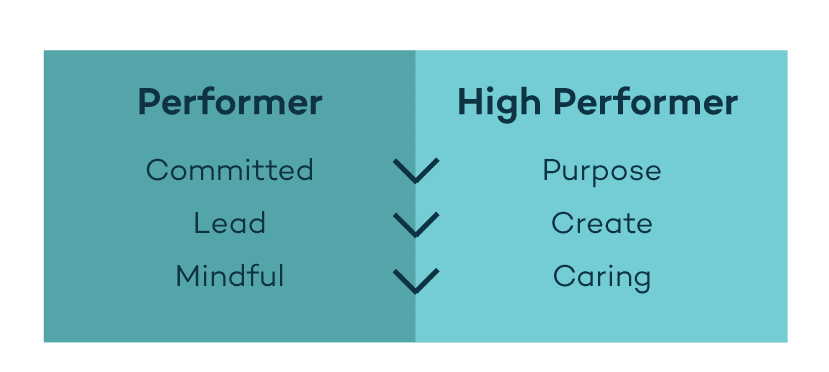
The high performer will always delve a layer deeper. They want meaning and understanding, something profound. While not everyone may want to be a high performer, those who do can benefit from some common insights and opportunities.
Common insights
Imagine a triangle, with its broad base representing character and competence. These feed into one’s skill set, then build to a sharp apex at the top: execution. High performers approach each layer systematically and share some common insights:
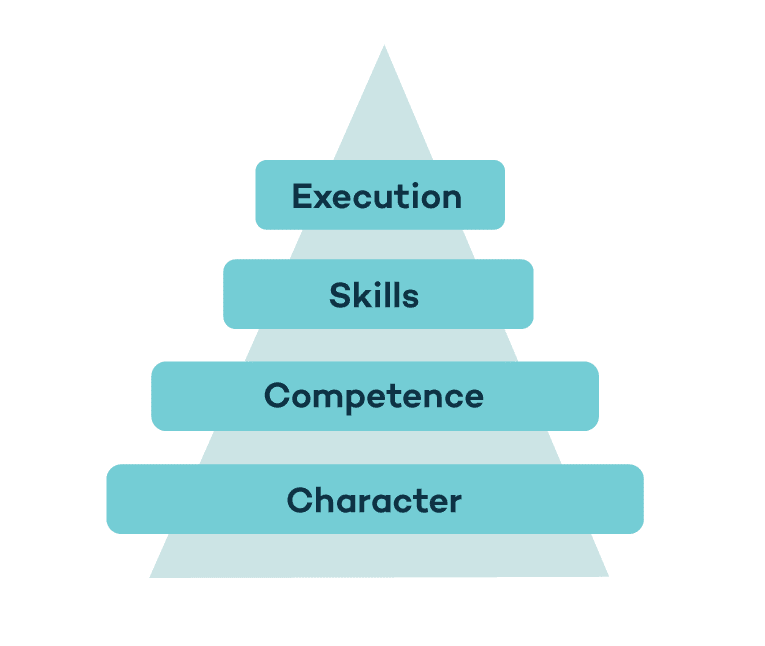
Execution – combined with experience, the accumulation of a high performers character, competence and skill level determines their ability to execute in a moment. They see execution as an opportunity to obtain feedback.
Skills – Often holding a position of a leadership or influence high performers are consistently scanning. They are proactive and eager to refine their current skillset and acquire new and more relevant skills.
Competence – High performers back themselves while striving to produce higher quality. A common trend evident is that they are relentlessly curious in search of new insights to develop their true competence.
Character – At the base there is daily significant growth potential. High performers consistently nurture this space, more often in the shadows. They know that their true quality is always left behind the room they leave.
Key opportunities
In today’s dynamic performance landscape, three key development opportunities stand out:
- Why, What and Who
Understanding why you do what you do, what you aim to achieve, and who can support you is crucial to maximising your potential. These questions serve as a compass for personal growth. - Cultivating Deeper Relationships and Fostering Trust
Research consistently highlights the centrality of trust in all social interactions. Trust enhances collaboration, encourages vulnerability, improves communication, and fuels idea generation. Deepening your relationships can have far-reaching personal and strategic benefits. - Objective Goal Measurement
Consider the difference between the 2D roadmaps of the past and the current 3D versions on your phone. Which of them offers greater clarity? Which helps you get where you’re going faster? Clear, detailed goals enhance efficiency. They provide a roadmap that not only guides you but also identifies potential risks, opportunities, timelines, and obstacles to be aware of.
High performance is not always easy to define or achieve, but you know it when you see it. Those who do achieve it will always stand out.
More on Peak Performance
How to Achieve Peak Performance
Ready to take your next step toward peak performance? Get in touch:

No risk, no reward. It’s a common enough expression, albeit one generally ignored in both business and life in favour of risk-averse stability, to the detriment of both success and satisfaction.
The Strangest Secret
Earl Nightingale was an American radio personality, speaker, and author known for his motivational works. His 1956 spoken word record, The Strangest Secret, sold more than a million copies, making it the first spoken-word recording to achieve Gold Record status [1]. However, it is another of his records that is the focus of this piece [2]. In this record, on the topic of the value of risk, he argues that risk-taking is not only a profoundly necessary endeavour for anyone hoping to get ahead, but also, paradoxically, not that risky – if done right.
It’s a message as relevant today as it was then.
Defining risk
Risk is any action or decision that carries an element of uncertainty, with both potential gains and losses. In business, it encompasses everything from launching a new product in uncharted markets to making significant financial investments.
Nightingale is quick to point out that there is a big difference between taking a calculated risk and a more abstract one. The former is “the man who risks all of his time on a goal he wants to reach, on a dream in his heart, who stakes his livelihood and the livelihood of his family upon his own brains and the proper use of his time and tackles the world single-handed. Here’s the risk-taker, to whom the spoils will generally accrue.” The latter is “the impractical dreamer and stargazer.”
He posits that the vast majority of people in the world are not risk takers. According to data of the time, “98% of men in the country are looking for security in their work. That is, they’re mainly interested in losing themselves deep in the warm, nourishing viscera of some large corporation.” (It should be noted that his recording was made at a time when men made up the majority of the workforce, but that his points hold relevance for all genders, in and out of the workplace.)
While he has no problem with those who choose to prioritise security, he notes that there are many benefits afforded to the risk-taker above such people, whether that risk-taker ultimately ends up succeeding or not.
The risk-taker, crucially, must think. Meanwhile “the man with the good steady job who’s familiar with his work and surroundings can go along pretty well from day to day without doing any creative thinking at all.” Such workers, whom Nightingale refers to as the play-it-safers, don’t need to do any more than they have to do. They are masters at getting by. Steady, secure, and ultimately unchallenged.
Meanwhile, for the risk-takers, forced to spend their time thinking, other doors open. Because anyone who spends a great deal of their time thinking “is going to come up with a good idea once in a while. The law of averages is on his side.” And all it takes is one good idea to succeed.
The risk paradox
The paradox at the centre of Nightingale’s argument is that risk-taking, if done properly, in other words by dedicating oneself wholeheartedly to a craft or idea and putting the work in, is far more likely to make one successful than playing it safe. Strange as it may sound, risk-taking is not that risky.
Part of the reason risk-takers have a surprisingly strong likelihood of success is that they are a rare breed. At the time of his recording, they made up 2% of the population – “and since [the risk-taker is] generally working on an idea that will in some way serve the big 98%, the odds swing rather favourably to his side.”
The role of failure
Why is it that risk-takers are such rarities? Well, because “anytime you attempt anything in which you risk failure, you run the risk of having people laugh at you.” Nightingale gives the example of Alexander Graham Bell, who was ridiculed all across New England while trying to gain investment for his grand idea – a device that let the human voice travel down a wire. He was mocked, then mocked some more, until eventually his idea worked, at which point he went from being the town laughing stock to a seismic historical figure who expanded the scope of human communication forever.
A more recent example would be Lin-Manuel Miranda’s now infamous appearance White House Evening of Poetry, Music, and the Spoken Word in 2009, at which he performed a song from a new musical he was writing – a historical hip-hop number about one of the US founding fathers. He was met with laughter from some of the most powerful figures in the country, including then-President Barack Obama. Hamilton went on to become an unprecedented worldwide hit and somewhere along the line the joke stopped being funny.
Fear of being ridiculed holds us back. No one wants to look stupid, so we draw within the lines, unwilling to discover what we could do with a blank page. “Millions of people laughing in derision could not hurt us an iota, but we stand in mortal terror of it,” Nightingale says. “Men and women who can prove themselves heroes in great crises tremble before derision.”
In order to succeed, one must push past the laughter, as Bell and Miranda did. They must have faith in their ability and their idea, regardless of what others think. “To be great is to be misunderstood,” Nightingale continues. “We tend to forget that the greatest people, the greatest writers, the greatest teachers were, for the most part, in violent disagreement with their times and the way things were being done.” Failure is all but guaranteed in any walk of life. Risk-takers realise there’s nothing wrong with that. They don’t take it personally and they don’t let it hold them back. Play-it-safers see failure as the end of the world, and “it has cost much…sometimes the price of a laugh has meant the slamming of a door of fame and fortune or even immortality.”
Don’t look before you leap
Nightingale rails against what he refers to as the “winner in the useless information department”, the advice to “look before you leap.” This advice, he says, “is a good recommendation for swimmers and jumpers but as far as life is concerned it’s impossible to do. We can look backward. We can see the results of our past actions and learn from them but we can’t look into the future.”
We can’t know what will happen. We can’t “look”. As such, many choose not to leap at all – and another door closes.
Nightingale states that there are two vital criteria for any “leap”. (1) It should be towards something we want with all our heart. (2) It should be in a field in which we have a good background of experience or at least in an area related to our past experience.
This correlates with his earlier assertion regarding dreamers and stargazers, and the lack of risk in risk. Risk, as he recommends it, is not risky precisely because of these determining factors. One is operating in a field in which they have a genuine understanding and they are applying themselves fully within it. He makes the comparison with a successful group of wartime pilots known as “aces”, thought of as fearless daredevils. They took enormous risks in battle but survived. But while these pilots were certainly offensive in battle, they were not reckless. Nightingale notes that, in fact, they tended to be meticulous about the state of their aircraft and their preparation. They took risks when they needed to because they thought it would give them an advantage. There is an enormous gulf between such an approach and that of a kamikaze.
When to risk?
For those fighter pilots, it was fairly obvious when risk was required: they were up in the air with enemy squadrons approaching; something had to give. In life, things tend to be less straightforward.
Let’s say you’re working a normal 9-5 while starting your own business on the side. How do you know when to commit to the new venture full-time?
Or perhaps you’re pitching a new client. You want them to work with your agency and you have a safe approach to fall back on, something tried and tested, but you also think that pitch has grown a little stale, especially for this slightly more out of the box client. You have an idea for something more left-field, more colourful, that will make you stand out from the competition, but could also make you look a fool. Which way do you go?
Nightingale’s advice for incorporating risk is as follows. “When a situation comes along that involves risk and you don’t know whether to go ahead or hold back, reassess your goals. What are you trying to accomplish? What are you working toward? Will taking this risk, if it works out successfully, help you towards your goals?” If the answer is yes, give it a go.
It could go wrong, of course. You could fail, be met with laughter and derision. But a lot of eventual success stories start that way.
More on Failure
You’re Not Perfect, So Stop Trying To Be
Bouncing Back from Professional Failure
References
[1] https://www.pr.com/article/1064

Introduction
“The world would be happier if men had the same capacity to be silent that they have to speak.” – Baruch Spinoza
We fear silence. Perhaps not in the same way we fear heights or snakes or *insert debilitating personal phobia here*. Silence does not tend to bring about bodily shakes, dizzy spells or stultifying ramifications of any kind. Yet it is something we frequently work to avoid, now more so than ever.
All one has to do is look around a busy train carriage to see this fear being played out, invariably in the most mundane of ways. Gathered commuters bristle overcoat to overcoat. Some listen to music or podcasts. Others scroll dimly through their phones. The majority half-heartedly do both. In an age of consumption, where our duty is to swallow content reliably, if more often than not indifferently, silence, even in the briefest of doses, has become something with which we are unable to contend.
Of course it’s spilled into the workplace too. Silence is frowned upon. If you are in a meeting, you should be speaking, or at the very least have something to say. In keeping with the indefatigable antagonism of social media, you should have an opinion – a “take”. It’s recommended that you have at least one of these for every subject and are willing, ideally desperate, to express it. Because if you don’t have something to say, why are you in the meeting at all?
“X didn’t add anything to the discussion today, did you notice?” It’s often said (and still more often thought) after a meeting. Someone was not pulling their weight, did not contribute as expected. What it means is they didn’t speak enough. Because value is about quantity not quality. Many a worker has ascended the corporate ladder by being nothing more than a vocaliser, demonstrating a willingness to express opinions, unhelpful or outright irrelevant as they may be, with confidence and frequency.
Of course neither being a professional loudmouth nor professional churchmouse is the ideal state of play. And an advocacy of silence does mean being silent all the time. One should most certainly express opinions if they have them. But silence, already such a rarity, needs more uptake. The amount one says may have become the de facto model for assessing contribution, but it’s a false economy. It is far more beneficial to have a worker who understands the power of silence, and knows how to wield it well.
The power of silence in…meetings
Obviously how a meeting plays out is dependent on many factors: the parties involved, the topic of discussion, the format and formality. In some cases it may be that you have to speak first and for a prolonged period, due to your role at your company or expertise in whatever is being discussed. But when that’s not the case, there’s a great deal to be said for starting from a quiet place.
In letting others speak first, you learn their priorities, their potential doubts (which you can then work to alleviate) as well as getting a sense of their demeanour or disposition. When it’s your turn to speak, you can then tailor your points and tone accordingly. How you deal with someone open and relaxed will be different to how you deal with someone fixed and uncompromising, for example. The ability to tailor your approach and play the hand you’re dealt is invaluable.
It should be noted that in the context of a meeting, choosing silence does not have to be some grand gesture. It can consist of as little as giving a few seconds after someone has spoken for their point to land. As well as showing respect to their point – by giving it time to be considered, rather than jumping in right away, giving the impression all you’ve been doing is waiting for your turn to speak – it lets you process what they’ve said and respond with considered insight. Too often meetings consist entirely of people who want to make points, none of whom are willing to listen to anyone else’s.
Writing in Harvard Business Review, Allison Shapira, founder/CEO of Global Public Speaking and a professor at the Harvard Kennedy School, suggests some tools for knowing when it’s right to speak in a meeting and when it’s best to choose silence.
Before entering any meeting she suggests you write up bullet points of things you feel you really want to say – not waffle that you feel will validate your being there, actual points you think are important – as well as asking “why me?” By this she means, why do you care about any of this – your role, organisation etc. Answering that question adds to your sense of purpose and confidence, as well as reminding you that your worth in the meeting comes from your passion and experience, not your word count.
Shapira suggests one doesn’t speak if they’re only doing so to show off, either about how much they know or about how willing they are to be part of the room’s vocal contingent. Nor should one speak if they’re doing so only to empower others. Empowering others may sound like a positive, but by stepping up to be the group’s speaker, even if you then delegate conversation to others, serving as a sort of intermediary, you become a crutch for them. It may be helpful in the moment, but not in the long-term. Finally, before speaking, one should ask themselves whether what they’re going to say might be better held back for a one-on-one conversation. There’s nothing to be gained by airing dirty laundry in public, nor by wasting twenty minutes of a whole group’s time by talking about something that only concerns one of them.
It’s important to be vigilant about these things. As the old saying goes, “Most of us know how to say nothing; few of us know when” [1].
The power of silence in…leadership
Leaders, in particular, need to pay attention to how they are using silence, or more often failing to. Research conducted by Leigh Plunkett Tost of the University of Washington, Francesca Gino of Harvard Business School, and Richard P. Larrick of Duke University into the relationship between power and leadership found that, “Members of teams with high-power leaders are likely to keep quiet in meetings, both because high-power leaders talk a lot, meaning there’s not much time for others to talk, and because of the perception – fair or not – that powerful people aren’t interested in anyone else’s ideas” [2].
That perception could be wrong, but if your employees think it’s true – and so hold back on sharing ideas as a result of it – then the company will suffer all the same. Managers may not be aware of the power differential between themselves and their employees, or the impact it has on what employees are willing to say to them. As such, a manager may announce a decision and then assume from their employees’ silence that they are happy with it (because if not, surely they would speak up?) In actuality, the employees may simply see no point in saying anything because they think the boss has already made up their mind. As Kate Donovan, founder of US-based consultancy Equal Pay Negotiation, points out, “That’s a very dangerous difference” [3].
To get a true idea of what their employees think about what they’ve said, a leader should ask their team, “What’s your initial reaction to that idea?” as a starting point, opening the floor for comment without leading the witness.
The power of silence in…speaking
Strange as it may sound, silence is also one of the most valuable tools in our arsenal when speaking. Matthew MacLachlan, from the language and soft skills training provider Learnlight, has some tips for how to use silence in public performance: “Before starting, look at the audience and be silent for a moment because that says, ‘I’m in control. I know what I’m doing. I’m confident.’” [4] Not only that, but it garners more attention for the points you’re making. “Silence makes us nervous,” MacLachlan adds, “our instinctive reaction is that we’d better pay attention, there’s something going on here.”
Ginny Radmall, speaking coach and director of The Ivy Way, is also a proponent of the power of silence in speaking [5]. She notes how we use filler words such as “um” and “ah” to replace silence. Not only do such words lend a sense of uncertainty and lack of confidence, they also interrupt our breathing rhythm, so vital to speaking well. Overlong sentences, too, detract from impact. Silence works as an emphasis. Watch a few minutes of Steve Jobs here, or Barack Obama here. Rather than letting words tumble out in one long stream that the audience must then fish through to find what’s important, silence lets one know where their attention should be. When speaking, you want to make life as easy as possible for those listening to you. Silence helps.
The power of silence in…negotiation
Research conducted at the University of Groningen in the Netherlands in both Dutch and English found that when a silence in conversation stretched to four seconds, people started to feel unsettled [6]. In contrast, a separate study of business meetings found that Japanese people were happy with silences of 8.2 seconds – twice as long as English speakers [7].
Unsurprisingly, that fact is one global business people are aware of and attempt to use to their advantage. MacLachlan notes how, “Chinese negotiators are very, very aware that Americans like to fill silences and they are trained to stay silent and impassive because that will make the Americans uncomfortable and possibly make concessions without the Chinese having to do anything” [8]. Silence is golden – and gold is worth a lot of money.
Donal Carbaugh, a professor of communication at the University of Massachusetts Amherst, points out that Finns, too, consider silence to be a vital virtue. They are happy to sit in studied thoughtfulness. “No-one is saying anything but everybody’s thinking. They are engaged. The frame around silence at that point can be very positive,” he says [9].
But of course one’s nationality should not be the sole dictator of whether they are able to use silence to their favour. Whether we’re borrowing from the Chinese, Japanese, Finnish or whoever it may be, any of us can adopt a less talkative, more considered approach. It won’t feel natural at first. As with anything, it takes practice.
Success in silence
In a world overspilling with noise and data, silence is a rarity. But if utilised, it can offer us benefits in life and business. We negotiate with more authority, learn to listen and engage with what’s being said to us rather than just waiting for our turn to talk, and it lets us speak with greater clarity and emphasis. That’s not to say we must keep tight-lipped on all our thoughts or feelings; we should express anything important to us. But to avoid getting drowned out by the noise, it may be worth cutting out some of the waffle.
If you really want to feel the impact of silence, check out John Cage’s famous “music” piece 4:33.
More on Silence
The benefits of silence in our professional lives article by Shay Dalton
Introverts, extroverts and leadership podcast with Karl Moore
References
[1] https://www.forbes.com/quotes/556/
[3] https://www.bbc.com/worklife/article/20170718-the-subtle-power-of-uncomfortable-silences
[4] https://www.bbc.com/worklife/article/20170718-the-subtle-power-of-uncomfortable-silences
[5] https://www.linkedin.com/pulse/how-leverage-power-silence-when-pitching-your-business-ginny-radmall/
[6] https://www.rug.nl/staff/n.koudenburg/koudenburgetal.2011.pdf
[7] http://commons.emich.edu/cgi/viewcontent.cgi?article=1052&context=gabc
[8] https://www.bbc.com/worklife/article/20170718-the-subtle-power-of-uncomfortable-silences
[9] https://www.bbc.com/worklife/article/20170718-the-subtle-power-of-uncomfortable-silences

Introduction
In today’s rapidly evolving business environment, the traditional norms of leadership need to be revised. The boardroom, a focal point for strategic decision-making, requires a fresh leadership approach that underscores authenticity, self-awareness, and a careful equilibrium between challenging and supporting CEOs.
Identifying Authenticity Gaps
While gauging a leader’s authenticity and self-awareness isn’t an exact science, certain tools help shine a light on these essential traits. One way to measure authenticity is to assess the alignment between a leader’s self-identified values and their colleagues’ perceptions. When these do not overlap sufficiently, it could indicate a disparity between a leader’s intention and others’ perception, revealing potential authenticity gaps.
Similarly, self-awareness can be evaluated by contrasting a leader’s understanding of their strengths and weaknesses against feedback from their peers. This contrast fosters critical conversations about the role of self-awareness in potential CEOs and how a self-aware leader’s strengths and weaknesses might serve the company’s strategic needs.
Key Qualitative Attributes
Our work with boards, CEOs, and C-suite teams across various industries gives us a first-hand view of the evolving definitions of effective leadership. It’s becoming increasingly clear that quantifiable metrics doesn’t solely determine a leader’s success. Instead, it lies in understanding the qualitative attributes that result in success. This includes a leader’s behaviour, their ability to build teams and develop talent, and fundamentally, who they are—not merely the numbers they produce.
There are powerful psychological foundations behind this shift in leadership paradigms. The Big Five personality traits—Openness, Conscientiousness, Extraversion, Agreeableness, and Neuroticism—have been found to correlate with leadership effectiveness (Judge et al., 2002). In a meta-analysis of 222 correlations from 73 samples, Extraversion emerged as the most consistent correlate of leadership across various settings and leadership criteria, while Neuroticism showed a negative correlation. Overall, the Big Five traits had a multiple correlations of .48 with leadership, providing strong support for the leader trait perspective when traits are organised according to this model (APA PsycINFO Database Record, 2016). Leaders scoring high in conscientiousness and openness often exhibit heightened self-awareness and authenticity, underlining the value of incorporating these psychological elements into leadership evaluations.
The Role of the Boardroom
However, the success of this new leadership approach largely hinges on the practices adopted within the boardroom. Boards must expand beyond the conventional focus on governance compliance, cultivating an environment that encourages performance excellence. This strategy rests on diverse leadership styles, effective board structures, stakeholder engagement, and fostering a positive organisational culture. Central to this is the board’s ability to model ethical behaviour, uphold core values, and promote equality, diversity, and inclusion.
Moreover, soft skills, such as empathetic listening, clear communication, and emotional intelligence, emerge as a vital element in this context. Assessing these skills through methods like board process simulations can be particularly beneficial. These simulations mimic high-pressure environments, enabling the development and refining of these essential soft skills.
A critical aspect of the board’s role is striking a balance between challenging and supporting CEOs. This dynamic greatly influences the company’s overall performance. Boards must ensure optimal decision-making and performance while also providing a supportive environment for CEOs who often face high-stress roles. Yet, care must be taken to avoid falling into ‘support’ or ‘challenge’ traps. Cognitive biases can lead to overemphasising CEOs’ successes or difficulties based on initial perceptions, often creating a negative cycle of escalating tension and deteriorating performance.
Conclusion
In conclusion, the complexities of modern leadership necessitate a shift away from traditional boardroom practices. Embracing an approach centred on authenticity, self-awareness, and balanced dynamics between the board and CEOs can foster better conversations, higher-quality decisions, and stronger organisational foundations. As we continue grappling with an unpredictable world, it’s critical that our leadership frameworks evolve in tandem, ensuring a more effective and modern boardroom.
More on Authentic Leadership
Emotional Intelligence and Engaging Others
Leadership in Focus: Foundations and the Path Forward
Reference:
Judge, T. A., et al. (2002). Personality and leadership: a qualitative and quantitative review. Journal of Applied Psychology, 87(4), 765–780. https://doi.org/10.1037/0021-9010.87.4.765

1. Modern Leadership: Bridging Tradition and Innovation
Tokyo, a city where centuries-old temples stand alongside cutting-edge skyscrapers, exemplifies the merging of tradition with innovation. It paints a vivid picture of today’s leadership paradigm, where the challenge is to preserve age-old wisdom while embracing the agility demanded by modern times.
Take the example of Indra Nooyi, the former CEO of PepsiCo. Her approach was not just anchored in advanced business strategies but was deeply influenced by her roots and traditional values. By penning personal notes to the parents of her executives, Nooyi demonstrated a unique synthesis of cultural respect and contemporary leadership—suggesting that the two aren’t mutually exclusive but can indeed complement each other.
Now, more than ever, leadership encompasses a broader range of skills and qualities. Cross-cultural understanding, for instance, has emerged as a pivotal asset. It’s not just about an American entrepreneur being fluent in Mandarin but understanding and navigating the nuances of global markets, appreciating cultural subtleties, and forging meaningful partnerships across borders.
Ethical leadership is another domain gaining prominence. Companies like Patagonia, led by visionaries like Rose Marcario in the past, have shown that responsible governance isn’t just about ticking corporate responsibility boxes. In fact, Patagonia has committed to donating 1% of its total sales to environmental organisations through its “1% for the Planet” initiative, amounting to over $89 million in donations since the program’s inception. This move is a testament to genuinely embedding sustainability and transparency into the core business strategy, setting a gold standard for other enterprises to emulate.
In places of innovation like Silicon Valley, the very definition of leadership is evolving. It’s not confined to boardrooms or dictated by tenure. Here, a brilliant idea can propel a young developer into a leadership position, proving that age is becoming less of a determinant. Instead, adaptability, innovative thinking, and a relentless drive are becoming the hallmarks of modern leaders.
This shift in leadership dynamics extends beyond the corporate sphere and into global governance. While individual leaders may have their strategies and legacies debated, certain qualities are universally revered. Steadfastness, principled decision-making, and genuine empathy are essential traits for effective leadership in our interconnected age.
In today’s organisational landscape, leadership is omnipresent, transcending hierarchies. Firms like Google underscore this, promoting a culture where leadership emerges from collaborative efforts, proactive initiatives, and shared responsibilities. As the business world becomes increasingly complex, understanding and adopting these multifaceted leadership approaches isn’t just commendable; it’s imperative for sustainable success.
2. Leadership: A Blend of Nature, Nurture, and Adaptation
In every organisation, each individual brings unique skills and perspectives. While each member’s contribution is vital, the leader, much like a conductor, brings together these diverse talents to create a cohesive and effective outcome. Today’s leaders harness their natural abilities and continually refine and develop new skills to lead effectively.
Leadership is a synergy of inherent traits and cultivated abilities at its core. Determination, decisiveness, and vision may be innate for many, but skills such as emotional intelligence underline the constant evolution and adaptation that the modern leadership landscape demands. The journey of Ratan Tata, who transformed the Tata Group into a global conglomerate, exemplifies this balance. His leadership displayed a mix of inherited business acumen and learned skills, showcasing the essential interplay of nature and nurture in leadership.
In our fast-changing corporate world, leaning solely on inherent strengths or past achievements doesn’t suffice. Leaders like Isabelle Kocher, the former CEO of Engie, one of the world’s largest utility companies, recognised the importance of adaptability and sustainability in modern leadership. Under her direction, Engie embarked on a radical transformation, moving away from fossil fuels and heavily investing in renewable energy sources and infrastructure. This bold shift was not just a business strategy but a reflection of Kocher’s vision for a sustainable future. She spearheaded efforts to divest from coal operations and led Engie to invest in innovative renewable energy projects, embracing the future of clean energy. Effective communication played a crucial role in this transition. Kocher was adept at relaying information and conveying her passion, vision, and purpose to her team at Engie and the broader public, emphasising the company’s commitment to a sustainable and environmentally responsible future.
Diverse approaches to leadership also paint the modern landscape. While some leaders may naturally exude authority, others bring forward the strength of collaboration, collective achievements, and mutual respect. Leadership in the realm of the arts, for instance, as demonstrated by Theaster Gates—a social practice installation artist—shows how leadership can transcend corporate and political boundaries, making waves in cultural and community contexts.
Leadership today is not just about a title or a position. It’s a harmonious blend of what one is born with and what one learns and adopts, all tuned to the evolving needs of organisations and societies. Two prominent leadership styles that have gained traction in this context are ‘laissez-faire’ and ‘transformational’ leadership.
The laissez-faire style, which is derived from the French term meaning to “let go”, allows team members significant autonomy in their work. Leaders like Steve Jobs and Steven Bartlett are often associated with this style. They trusted in their teams’ inherent creativity and drive, intervening only when necessary. Such an approach has its merits in industries that thrive on innovation and where the creative freedom of individuals is paramount.
On the other hand, transformational leadership, as embodied by figures like Richard Branson, inspires and motivates team members to exceed their own expectations and achieve a collective vision. These leaders are proactive, continuously challenging the status quo and instigating change to better the organisation. They foster an environment where both the leader and the team support each other’s growth and transformation.
Both these styles emphasise the shift in norms surrounding leadership today. It’s no longer about just directing or managing but about inspiring, trusting, and continuously evolving to meet the ever-changing demands of the modern world.
3. Shaping the Future: The Role of Proactive Leadership
Proactive leadership focuses on more than just addressing current challenges; it’s about actively planning and influencing the future. While entrepreneurs like Elon Musk are often highlighted, digging deeper and understanding the foundational principles that enable such forward-thinking actions is important.
One key concept from organisational psychology is ‘Psychological Safety’. Introduced by Harvard Business School professor Amy Edmondson, it describes an environment where team members feel secure in taking risks and expressing their ideas without fear of reprimand. Successful teams, like those at Google, have pinpointed Psychological Safety as a driving factor. When leaders cultivate this safe space, they express organisational values and encourage a culture where innovation can flourish.
This atmosphere of trust and openness is especially crucial in today’s interconnected world, where leadership actions are constantly scrutinised. Every decision and every mistake is magnified in the digital age. It underscores the idea that ethical behaviour isn’t just a commendable attribute—it’s vital. Leaders who prioritise psychological safety invariably pave the way for ethical leadership. In this scenario, proactive leadership revolves around upholding transparency and ensuring that decision-making is always rooted in strong ethics, allowing team members to communicate openly and act with integrity.
However, challenges such as persistent gender biases remind us that there’s still work to be done. Effective leadership recognises such biases and takes deliberate steps to address and overcome them, ensuring that potential is recognised and nurtured regardless of gender or background. For instance, the often-discussed gender pay gap shows that women, on average, earn less than men in nearly every single occupation for which there is sufficient earnings data. This reflects a systemic inequality and can damage psychological safety, as it conveys an implicit message that women’s contributions are less valuable. Proactive leadership recognises such biases and actively works to address and correct them, ensuring that every team member feels valued and heard. This atmosphere of trust and openness directly feeds into the broader principle of psychological safety, where individuals can communicate openly without fear.
In conclusion, proactive leadership is about foresight and action. It means navigating the present while laying strong foundations for the future, driven by a combination of psychological understanding and ethical commitment. Today’s leaders don’t just ride the waves—they help create them.
4. Crafting Your Leadership Path
Leadership is a unique journey, blending inherent qualities, acquired skills, and external influences. Apple’s co-founder, Steve Jobs, advocated for pursuing passions and trusting one’s instincts. However, the leadership voyage extends beyond instinct. Like those by Daniel Goleman on emotional intelligence, ground-breaking studies highlight self-awareness as a keystone of effective leadership. Such understanding aids leaders in harnessing their strengths and addressing their vulnerabilities.
Adaptability is pivotal in the current age of rapid technological and societal changes. Management theories such as the Situational Leadership Model, developed by Hersey and Blanchard, emphasise that leaders must adjust their style based on the task and individual’s maturity. So, while the world moves quickly, aligning personal and organisational values ensures that leadership remains authentic and relevant.
Every leadership story is unique and shaped by personal aspirations, experiences, and trials. Recognising this, there’s a need to move beyond one-size-fits-all strategies. Customised leadership plans, tailored to individual paths and goals, prove more effective than generic formulas. A principle of economics, the Theory of Comparative Advantage, posits that individuals or entities should capitalise on their strengths. In the leadership context, this underscores focusing on one’s unique capabilities and value propositions. Furthermore, leaders aren’t isolated figures; they operate within complex organisational ecosystems. Just as a sailor must consider the sea’s currents and weather patterns, leaders must understand their organisational cultures. An environment fostering open dialogue, feedback, and continuous learning can catalyse a leader’s evolution. Conversely, restrictive cultures might pose challenges. But in both contexts, understanding and adeptly navigating these nuances differentiates good leaders from great ones.
In essence, leadership is not a linear path but a dynamic journey. It combines introspection, adaptation, and understanding of the larger organisational landscape. As the saying goes, it’s not just about the destination but the journey and how one travels it.
5. Visionaries to Tomorrow’s Leaders
Great leaders throughout history have consistently displayed adaptability, innovation, and a commitment to mentoring the next generation. Larry Page’s leadership at Google exemplified this. Rather than solely focusing on ideas, he emphasised nurturing talent, most notably by mentoring Sundar Pichai. This approach underscored the belief that a true leader’s legacy is in empowering successors. Apple’s resilience and ability to reinvent itself embody the “falling forward” concept — transforming challenges into opportunities. Amazon’s success story is a testament to adaptability, echoing Bruce Lee’s advice to be “like water,” — flexible, yet forceful. In the tech realm, Netflix’s pioneering use of AI and Microsoft’s emphasis on cloud computing under Satya Nadella highlight the importance of forward-thinking innovation, drawing parallels to historical visionaries like Tesla and Edison.
6. Cultural Harmony: Crafting the Future of Leadership
Satya Nadella’s transformative journey at Microsoft exemplifies the essence of a growth mindset, teaching us that true success isn’t solely about beginnings but rather the directions we’re willing to explore. With its relentless drive to innovate, Tesla embodies the spirit of pioneers who are never content with the status quo. Adobe’s culture of valuing feedback and continuous improvement is a testament to the belief that “iron sharpens iron,” highlighting the power of collective growth and learning. Similarly, Spotify’s commitment to inclusivity is not just a nod to diversity but a clear indication that the future of leadership mirrors and celebrates the myriad voices of society.
In essence, these examples underline that the modern leadership paradigm thrives on adaptability, continuous growth, and cultural harmony, emphasising that the best leaders not only lead but also listen, learn, and reflect the diverse tapestry of our global community.
7. Nurturing Leadership: Strategies, Collaboration, and Vision
Margaret Heffernan’s concept of “wilful blindness” refers to the deliberate decision to ignore or avoid inconvenient facts or realities, even when they are readily apparent. It underscores the importance of leaders being vigilant, aware, and attentive, breaking from conformity to foresee and address challenges. Salesforce’s culture, which champions innovation and disruption, mirrors the economic principle of ‘creative destruction’ proposed by economist Joseph Schumpeter, where innovative methods and ideas replace old ways of doing things. Reflecting on the management theories of Peter Drucker, he emphasised that “Management is doing things right; leadership is doing the right things.” As emerging leaders design their journey, frameworks, like Amazon’s leadership principles, serve as contemporary iterations of timeless navigational tools — guiding leaders both on well-trodden paths and ventures into the unknown.
8. Future Leadership: Charting New Waters with Timeless Principles
Drawing from Charles Darwin’s insights, it’s not the strongest species that survive, nor the most intelligent, but the most responsive to change. In the realm of leadership, this rings especially true. Traditional hierarchical models are yielding to a more collaborative and adaptive approach. The dawn of AI and the intricate dance of globalisation echo the words of economist John Maynard Keynes, emphasising the need to be versatile in the face of “animal spirits” or unpredictable elements in markets. Cybersecurity concerns today might parallel the challenges once posed by maritime pirates during the age of exploration, underscoring that while challenges evolve, the essence of leadership remains in navigating uncharted territories. Tomorrow’s leaders will not only ride the waves of technological change but also harness the diverse strengths of global teams and confront ethical quandaries in a deeply interconnected era guided by principles as old as leadership itself.
9. Leading Forward: Drawing from the Past, Shaping Tomorrow
Much like Rome, which wasn’t built in a day, leadership thrives on a foundation of age-old principles fused with modern foresight. This blend is reminiscent of the principles set forth by legendary strategist Sun Tzu in “The Art of War” – understanding the terrain, knowing oneself, and being fluid in response. Today’s urban jungles, from Tokyo to New York, encapsulate this harmony; they meld historical foundations with skyscrapers of ambition, symbolising the fusion of past wisdom with future vision. Leaders like Indra Nooyi exemplify this duality, resonating with the roots of ancient wisdom while spearheading an era of digital transformation. Leadership, therefore, isn’t a destination but an ongoing odyssey. Much like cities that reinvent while retaining their essence, leaders must be perpetual pioneers with an eye on the horizon and feet grounded in enduring values.
More on Trust
The Importance of Trust article by Shay Dalton
Elite Team Cohesion article by Jonny Cooper
Leadership in Focus: Foundations and the Path Forward article by Shay Dalton
The Importance of Ethics article by Shay Dalton
“Empowering” Workers is More Than a Catchy Phrase article by Shay Dalton